Bhuleshwar Temple, Pune
Pune — a city that’s got everything: from history to spirituality, from tasty street food to peaceful hills, and from forts to temples that still echo with legends. The more you explore, the more you realize this city is like that underrated friend who quietly surprises you every time. And in today’s blog, your travel buddy Sandeep is taking you to one such surprise — a temple that still many people don’t know about. Or maybe they heard of it once during a boring history lecture and forgot.
But recently, it’s gaining more love from travelers and devotees alike. I’m talking about Bhuleshwar Temple — a place that’s 50 km away from Pune, situated away in the Yevat area, and dedicated to none other than Lord Shiva himself. This temple isn’t just famous for its spiritual vibes, but also for its jaw-dropping carvings, a 7-foot-tall Nandi idol, and oh yes — it’s located on the Daulatmangal Fort, a 13th-century beauty. It even tells stories from Ramayana, Mahabharata, and Samudra Manthan, all carved in stone. I think that’s enough to tickle your curiosity — so grab your tea or chai and let’s dive into the spiritual (and adventurous) journey to Bhuleshwar Temple.
Bhuleshwar Temple History
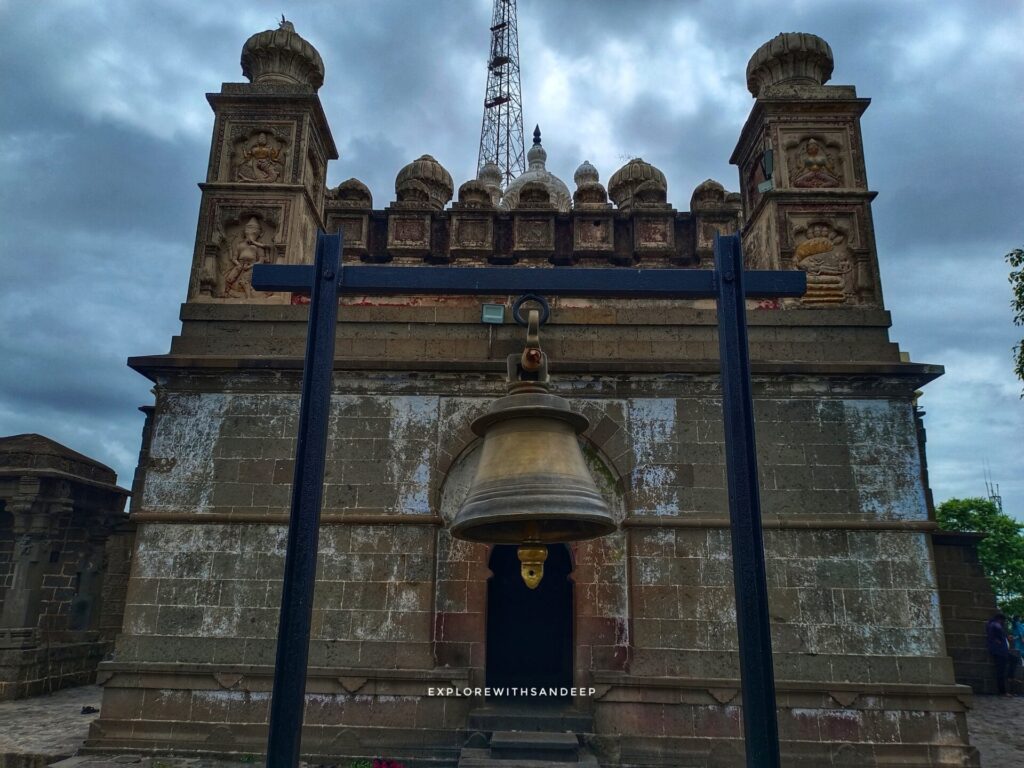
Before I take you through the actual journey, let me tell you — this isn’t just a temple. It’s a place that has survived invasions, faced destruction, hidden itself in plain sight, and still whispers stories through stone.
When I first visited Bhuleshwar Temple, I felt something different — a calm, ancient silence that made me wonder: what’s the story behind all this?
Built on top of Daulatmangal Fort, Bhuleshwar Temple is believed to have been originally constructed in the 8th century during the Rashtrakuta dynasty. Later, it was rebuilt in the 13th century by the Yadava kings of Devagiri, who were great supporters of art and Shiva worship. But history wasn’t always kind to this place.
During the Mughal era, when many Hindu temples were attacked or demolished, Bhuleshwar Temple was also damaged. To protect it from future destruction, the Yadavas made a clever decision — they designed the temple to look like a mosque from a distance. The outer walls were built in Islamic architectural style, giving it a fort-like look that confused invaders and helped it survive through tough times.
Even today, you’ll see broken idols and damaged carvings, reminding us of those attacks. But what’s amazing is how much beauty and devotion still remain in every corner.
The real magic, though? It’s hidden inside.
And I won’t spoil it here — come along, and I’ll show you.
Journey Begins: Shravan Vibes & Last-Minute Plans
So, it all started on a Friday. I came back to Pune from Mumbai, and my mom hit me with a classic line: “Shravan month has started.” And just like that, my inner Mahadev devotee woke up 😅. I called up my buddy Nitin, and he looped in his colleague Harshad. We made a spontaneous plan to visit Bhuleshwar Temple the next day — the perfect Shravan vibe plan!
So on Saturday, we kicked off our journey at 11 AM from Kondhwa BK. The route? Bopdev Ghat → Saswad → Vanpuri → Bhuleshwar Temple. Since it was July, monsoon had painted the entire landscape green. The cold breeze, misty hills, and a couple of crazy friends on bikes — what more does a man need on a road trip? 🎒🌿
Welcome to… Singapore?! 🤯
After about 45 minutes of riding, we reached a place called — wait for it Singapore Village. Yes, in India. We stood there, clicked some pics, and joked: Yehi toh humara international trip hai bro. 😂 Travel budget = 0. Vibes= 100%.
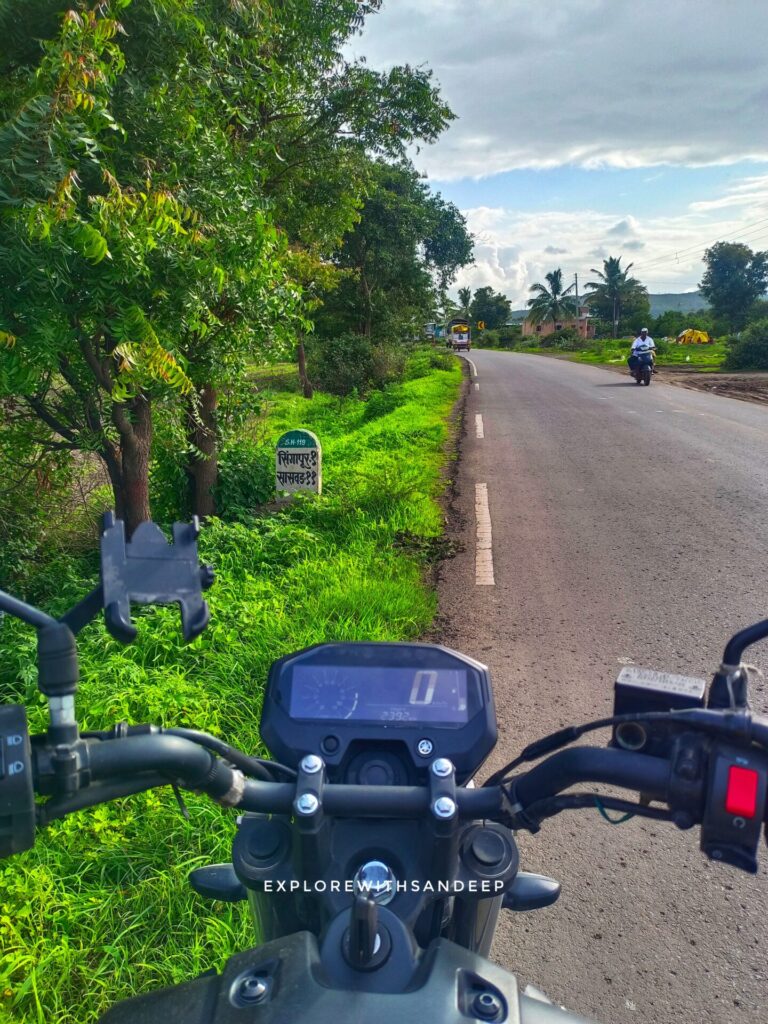
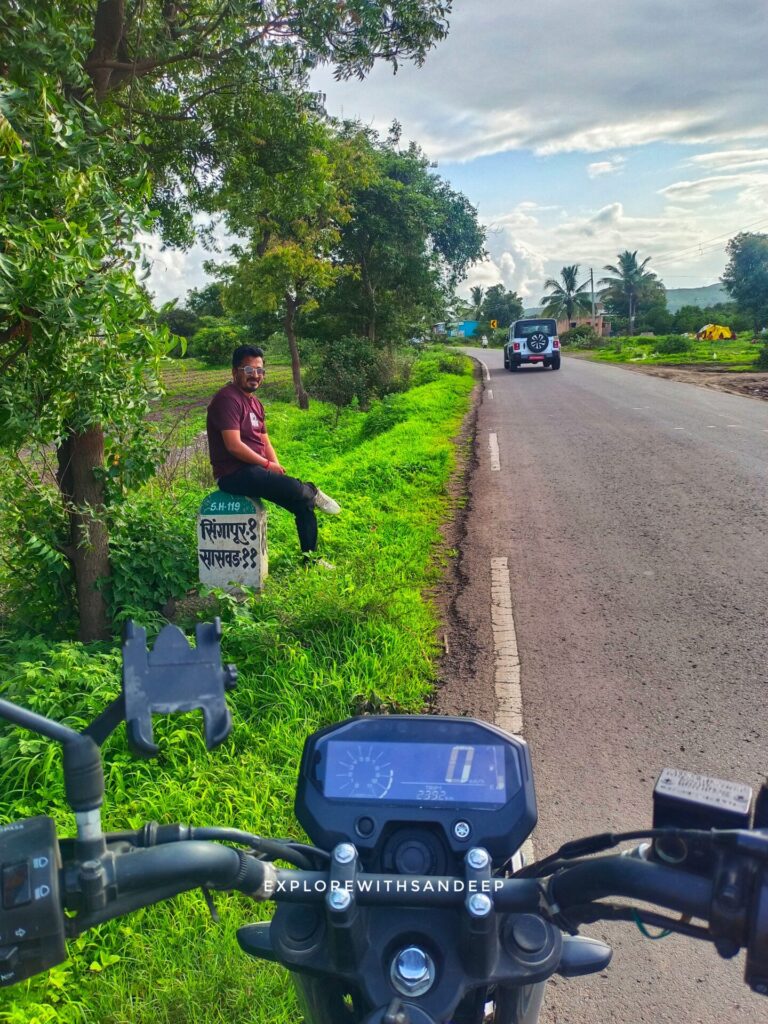
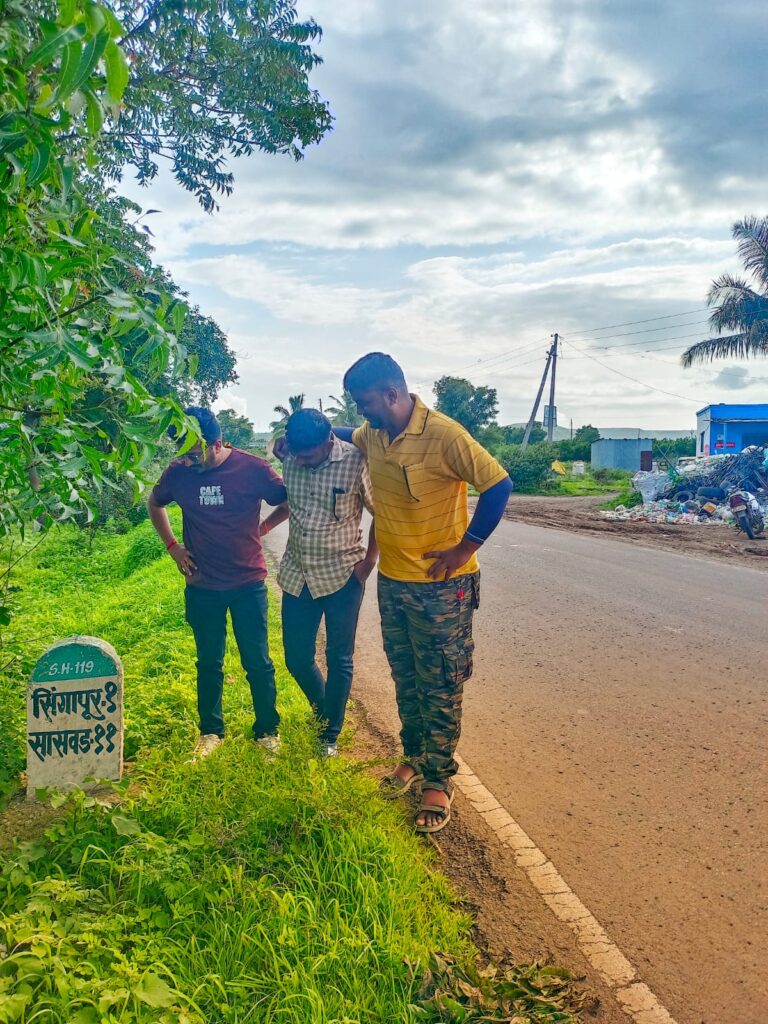
Soon after that fun stop, we continued our journey and on the way, we saw Dhawalgad Fort — standing tall in the distance like a sleepy guardian of the hills. Eventually, we reached the base village called Malshiras. From there, a single road takes you to Bhuleshwar.
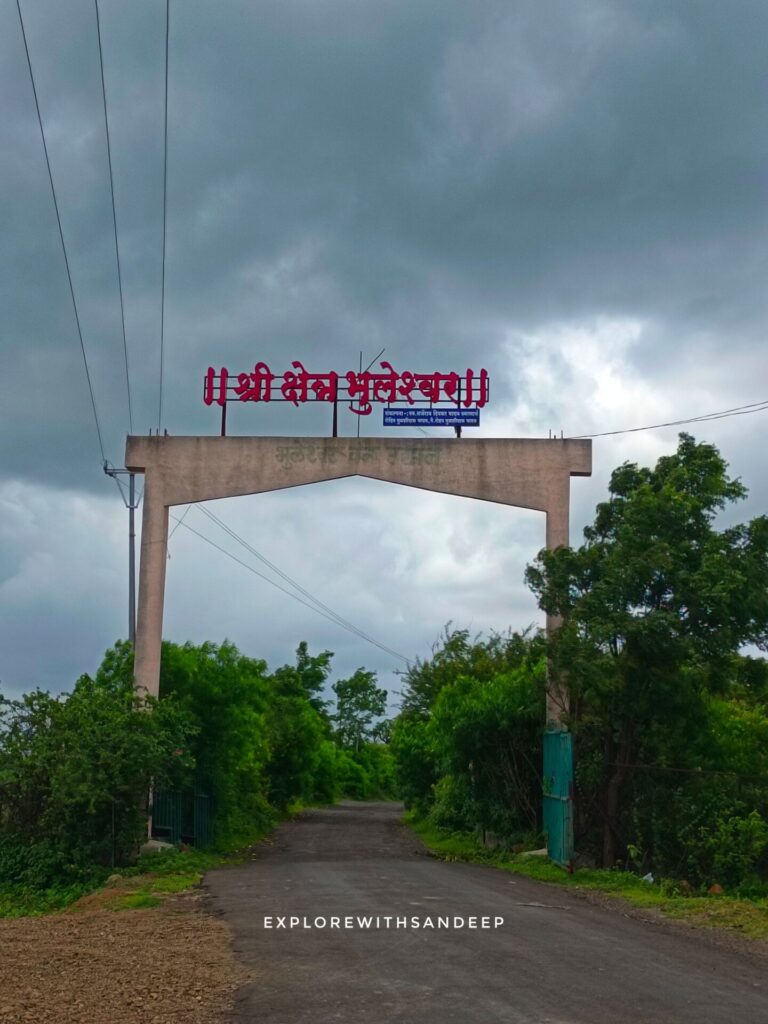
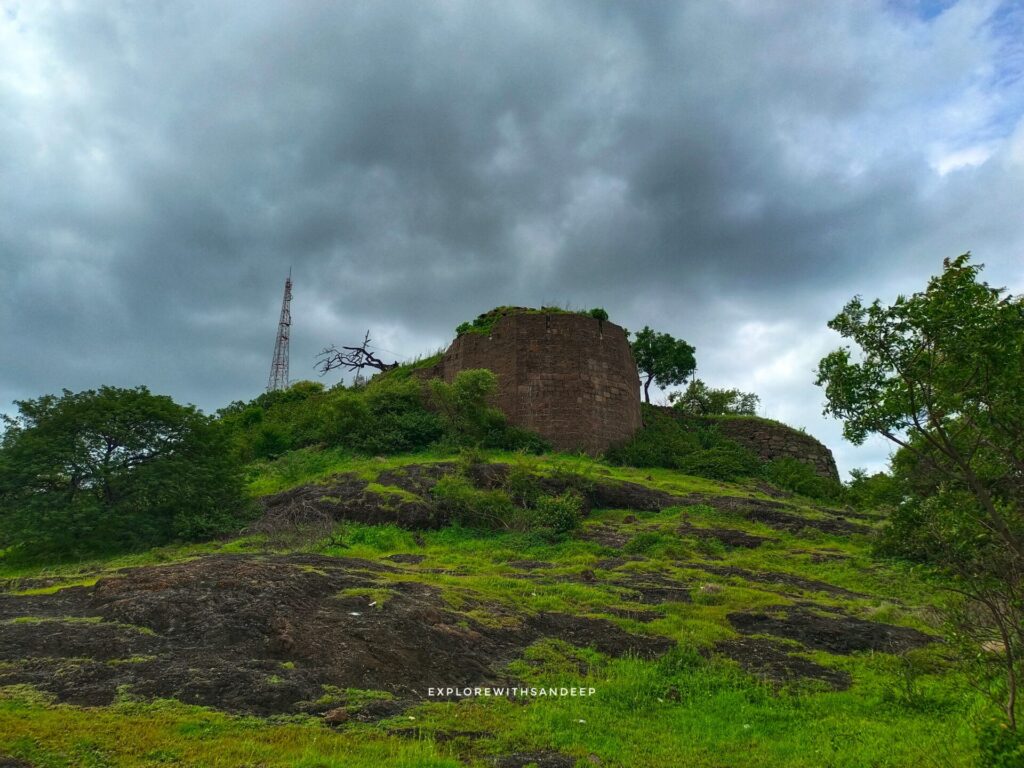
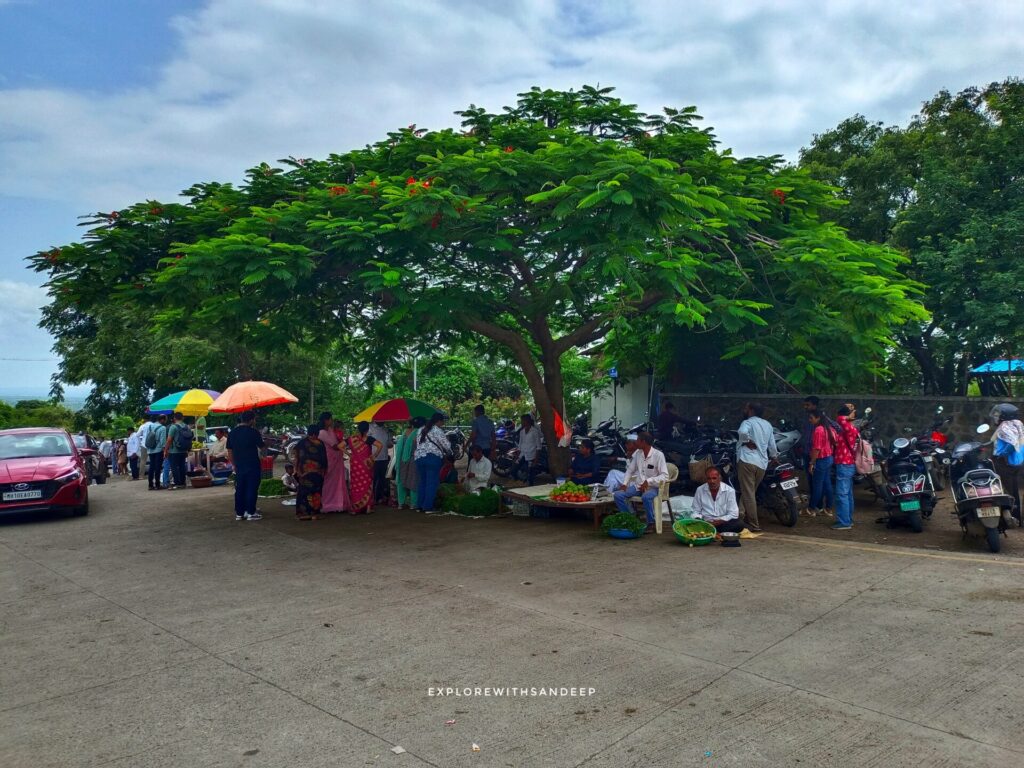
As we neared the temple, we passed through a massive entrance gate with the name “Shree Shetra Bhuleshwar” written boldly. The old burj (watch towers) of Daulatmangal Fort welcomed us — weathered by time, but still standing tall like old warriors. Near the parking area, some local villagers were selling fruits and vegetables straight from their farms — organic sabzi, Pune edition! 🥭🍅
We parked our bikes and started walking towards the temple. The spiritual energy was already kicking in.
Let’s Step Into Bhuleshwar – A Temple Full of Stories
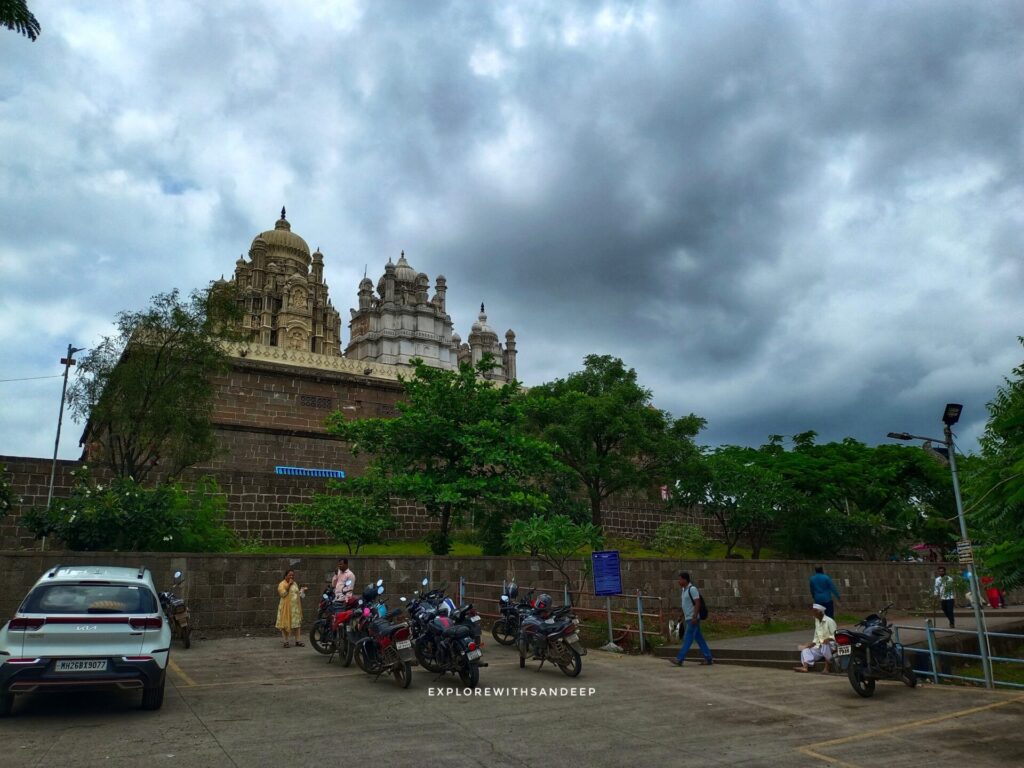


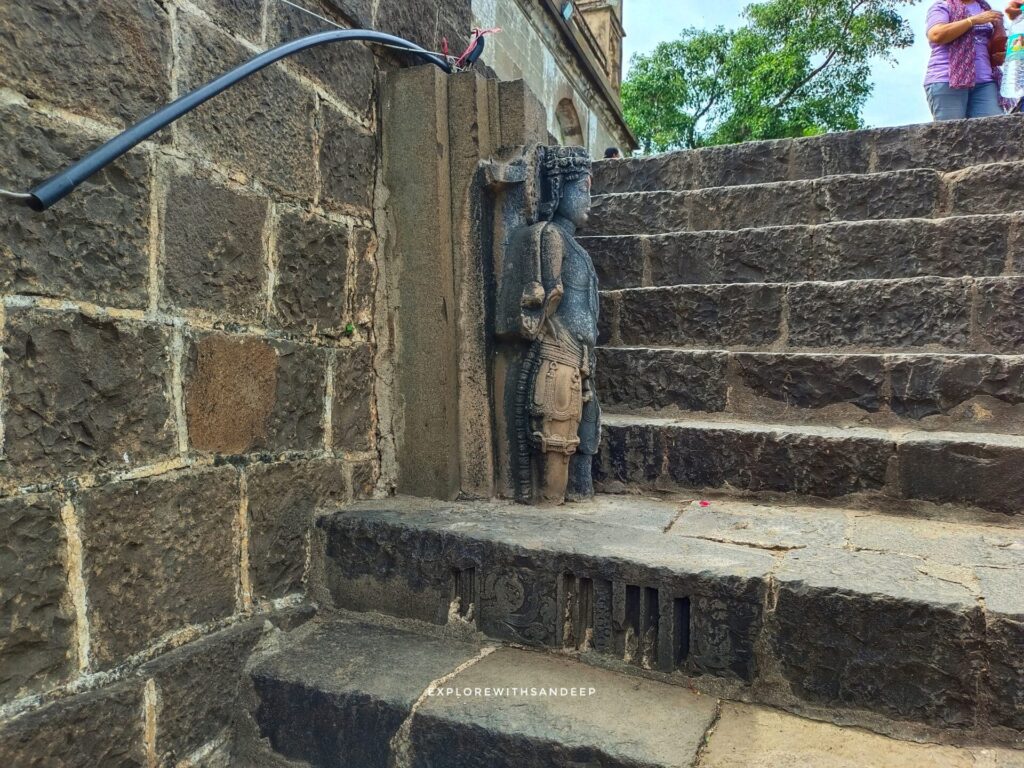
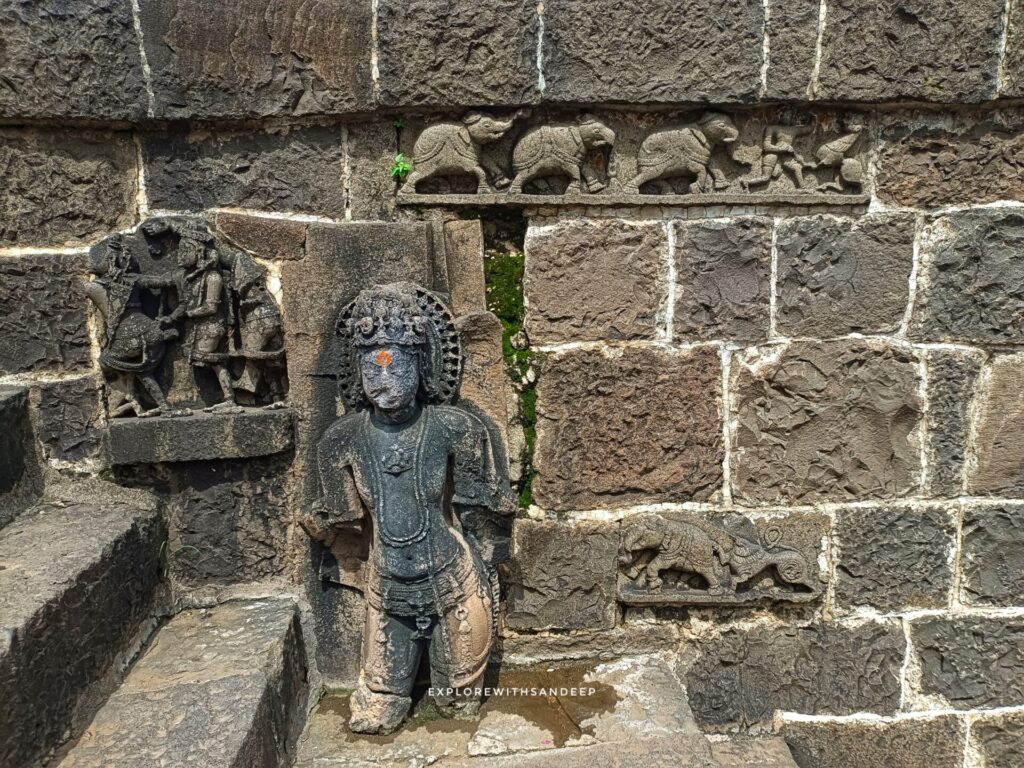
We removed our shoes and climbed the stairs, and instantly, I saw stone idols of Dwarpals (gatekeepers) on both sides — like temple bouncers from ancient times 😆. On the right side of the stair wall, there were stone-carved elephants which looked too royal to ignore. That’s when I realized — this isn’t going to be any ordinary temple experience.

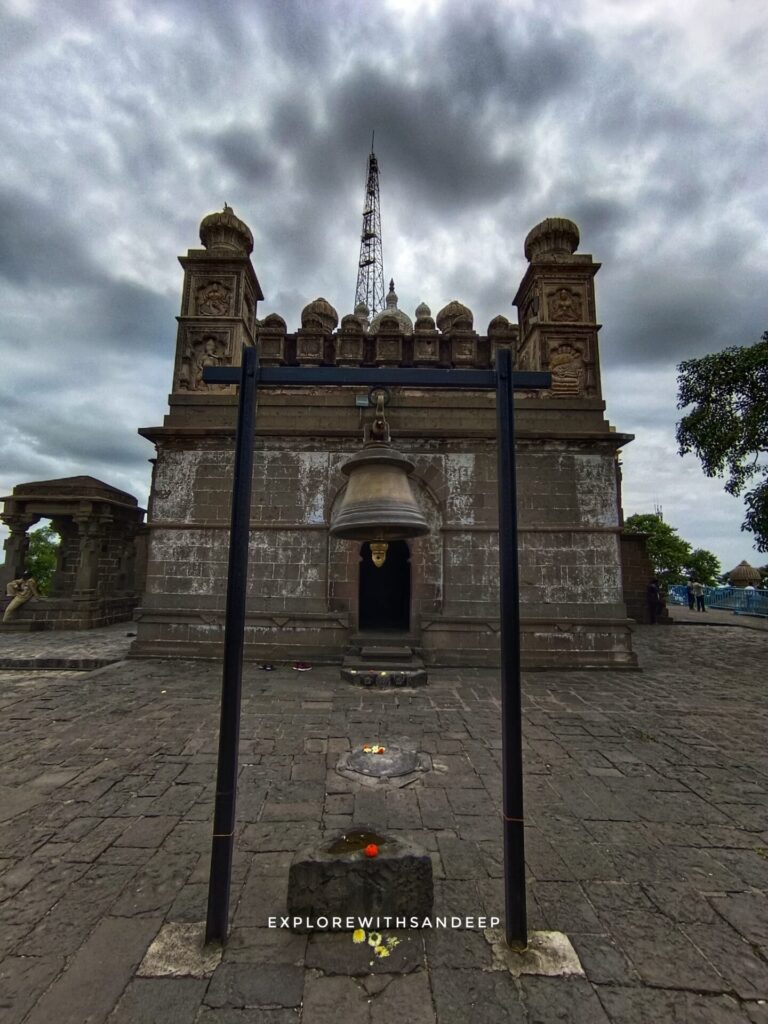
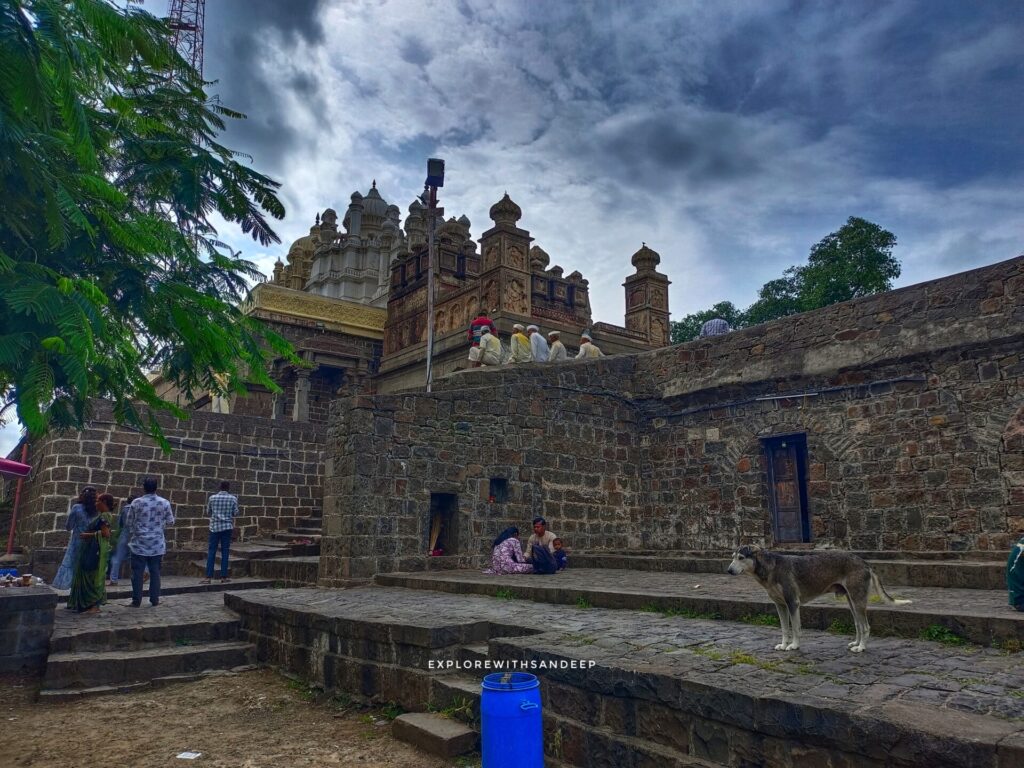
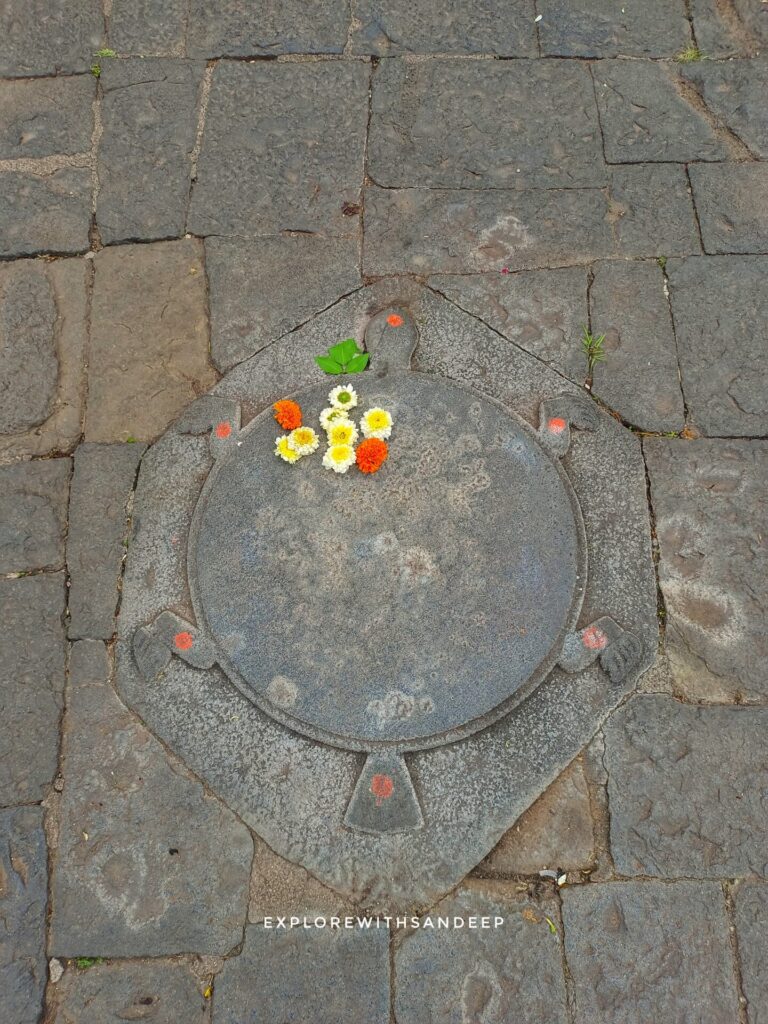
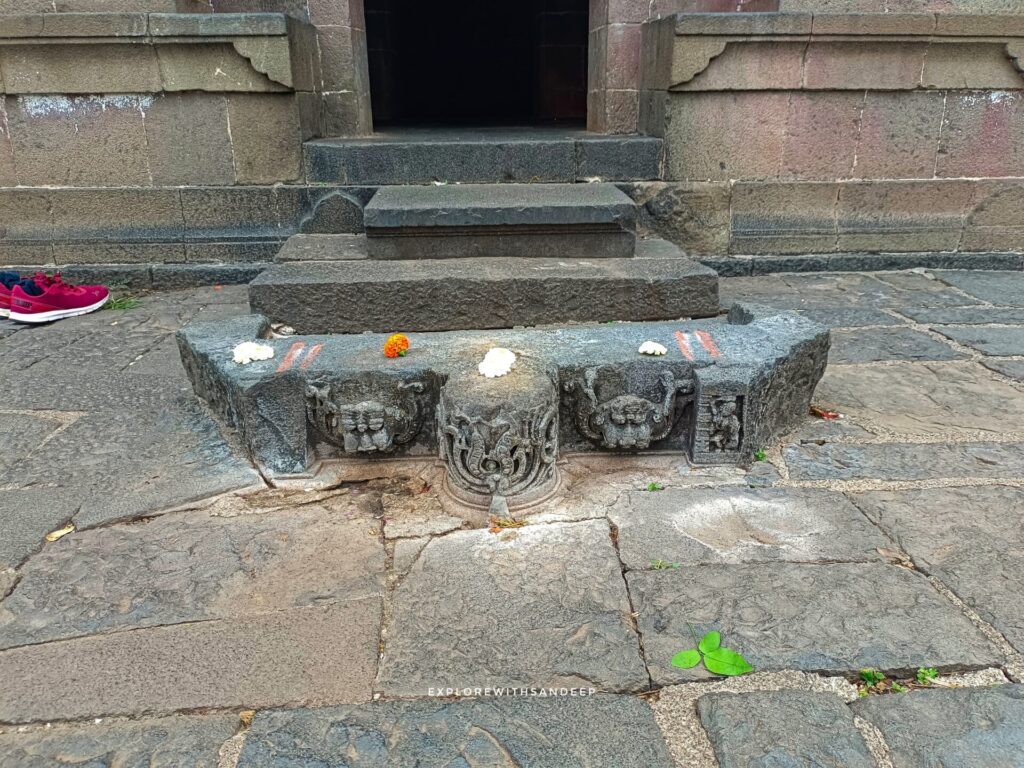
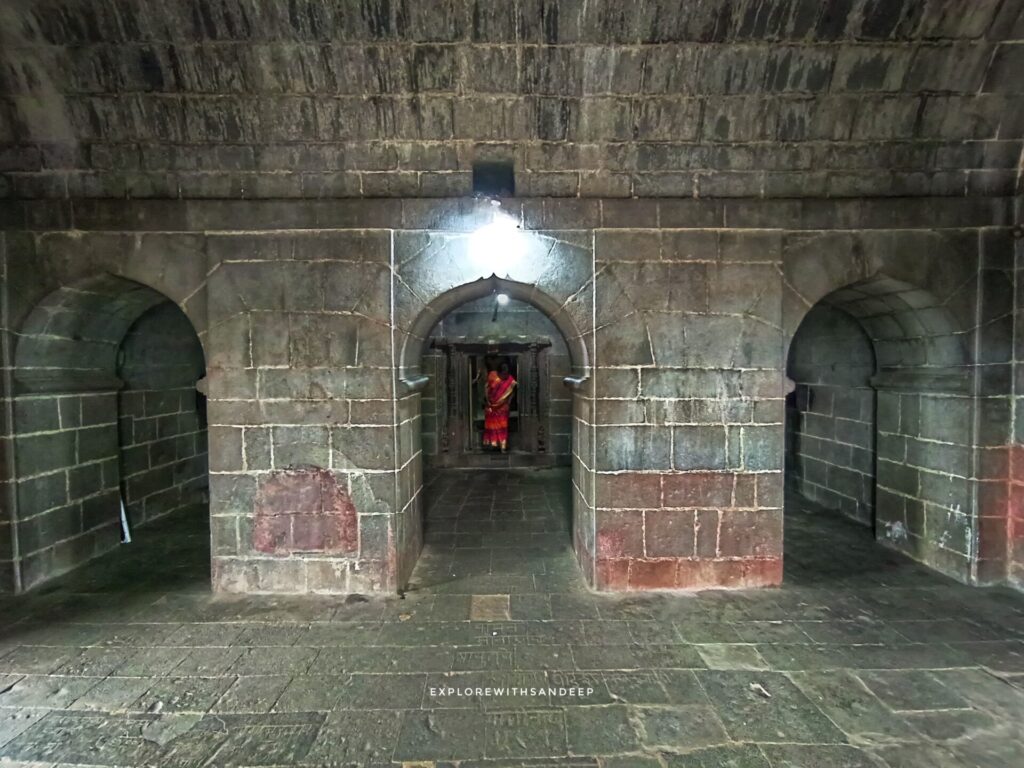
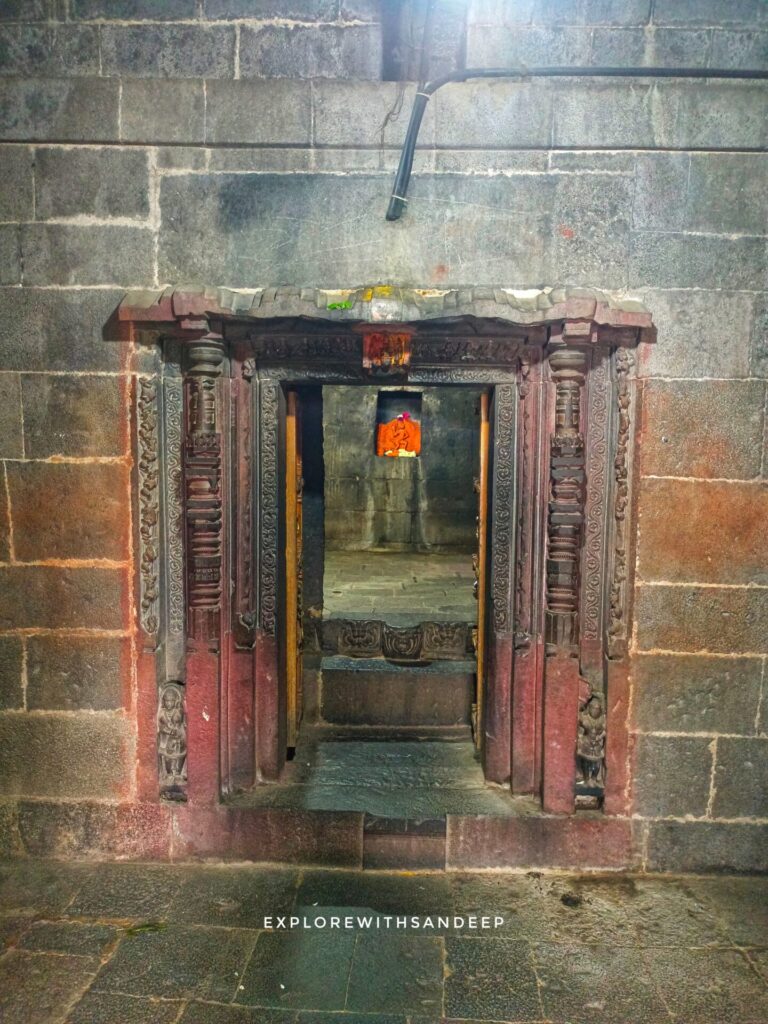
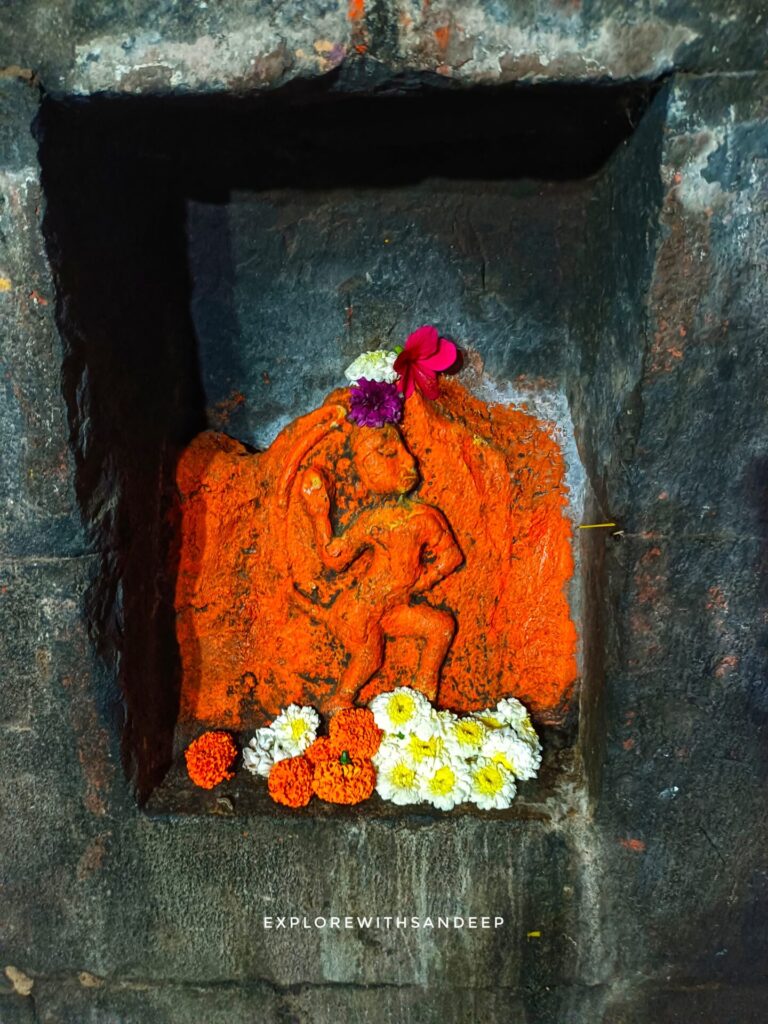
We came across a giant bell, Devotees were hitting it and moving forward, so of course, we followed the tradition (and took a selfie too 😜). The temple has two entry gates. After passing through the first, you enter a peaceful open space. As we crossed the second gate, we saw an idol of Lord Hanuman, and took blessings before heading ahead.
Not Just Walls, But Pages of History
Now here comes the jaw-dropping part — the main temple area. Bro, this is not just a temple, it’s like a stone-carving museum. Every pillar, wall, ceiling, window — literally everything is carved with unique figures of gods, goddesses, saints, animals, and epic moments.
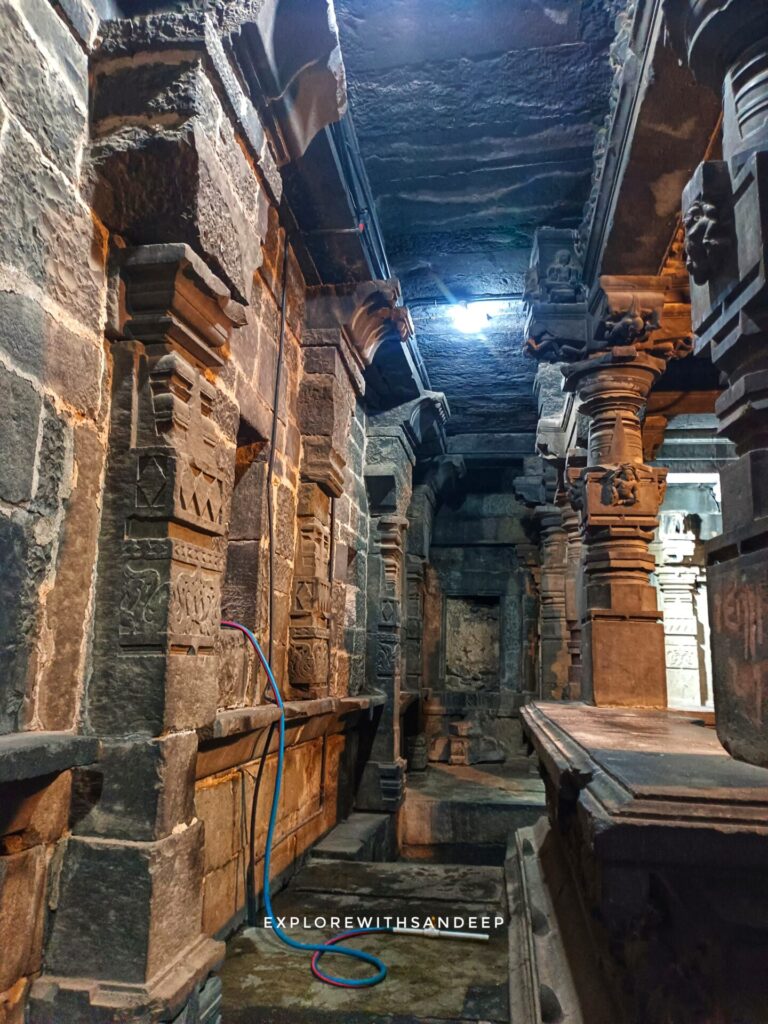
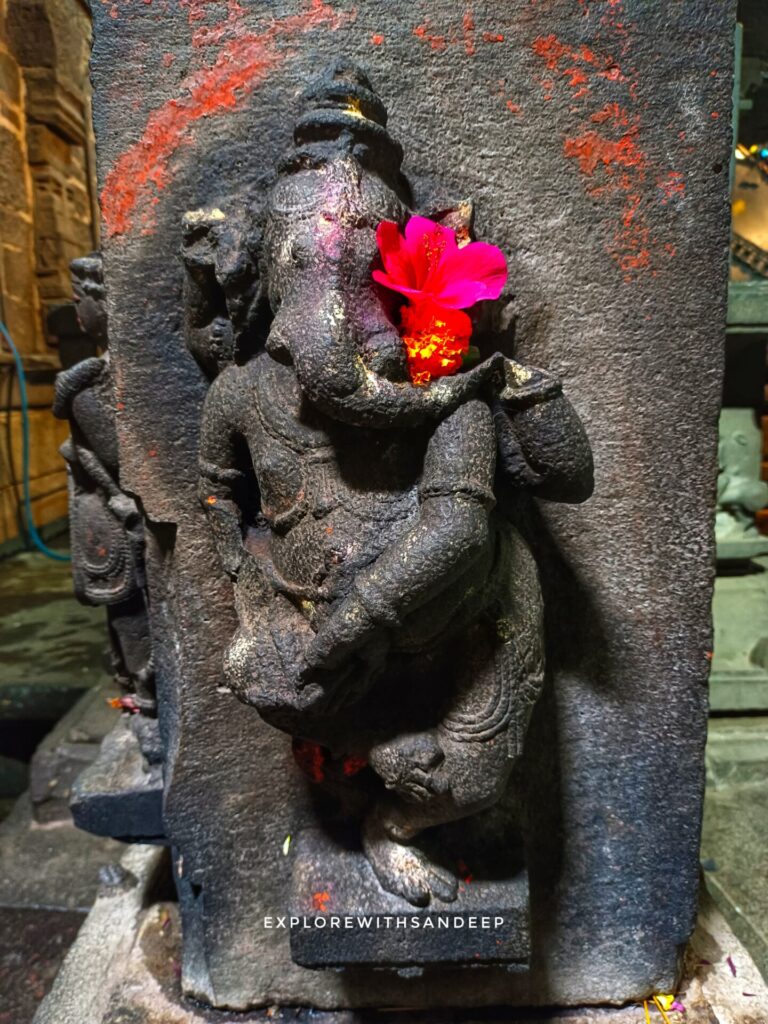
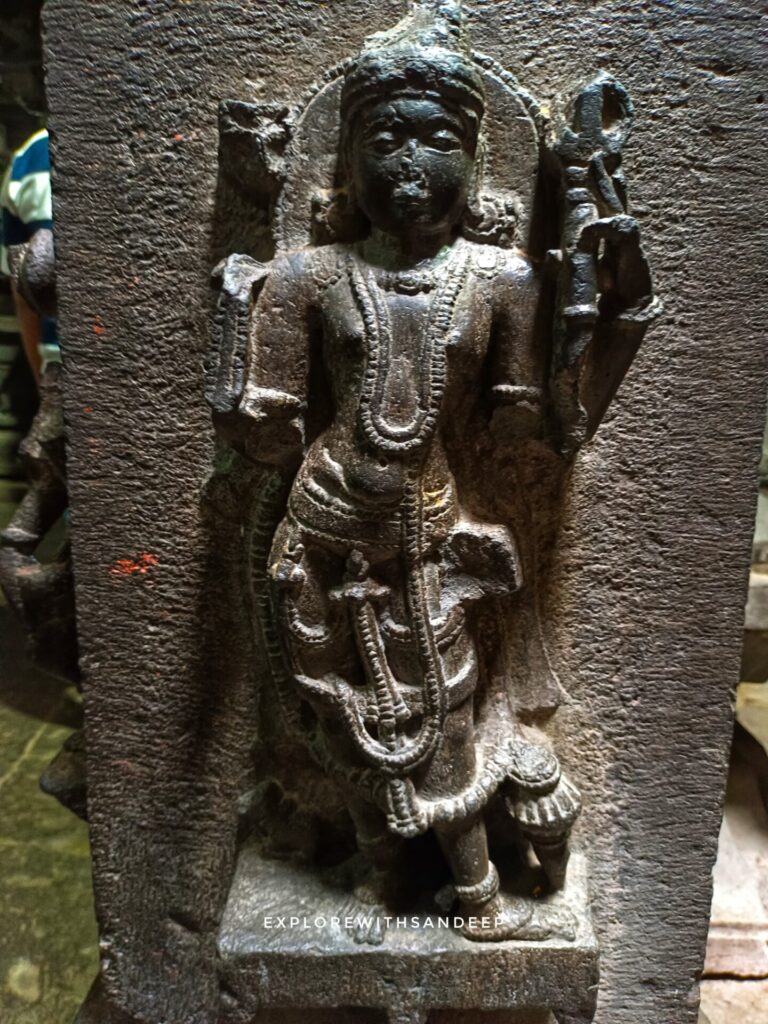
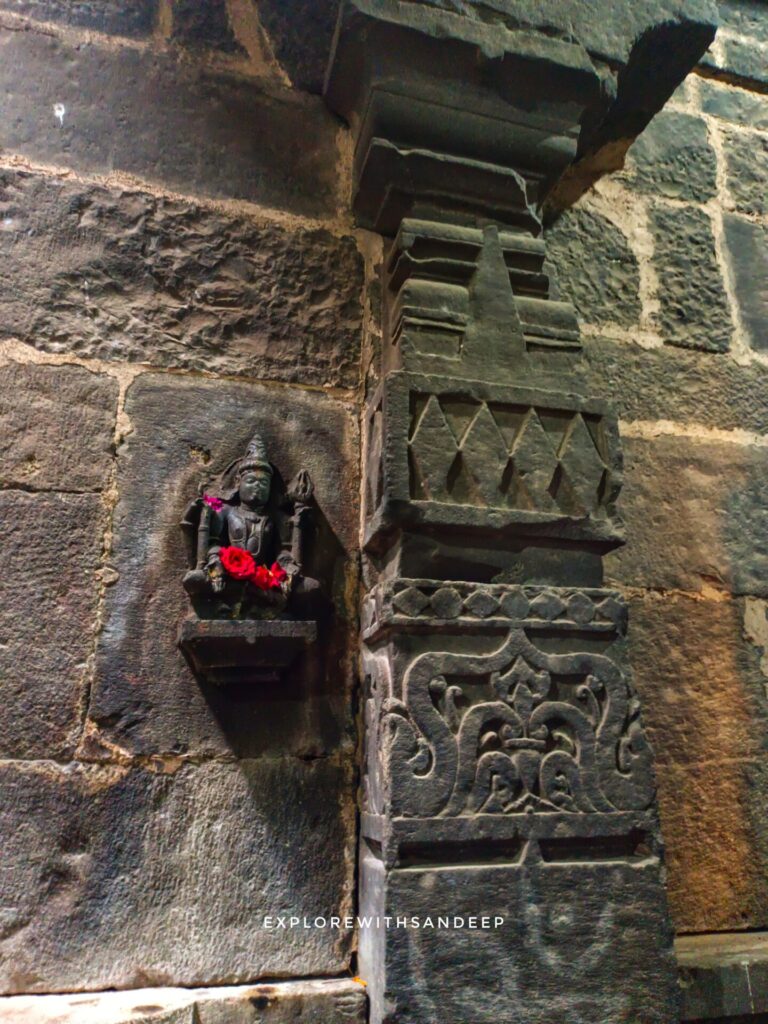
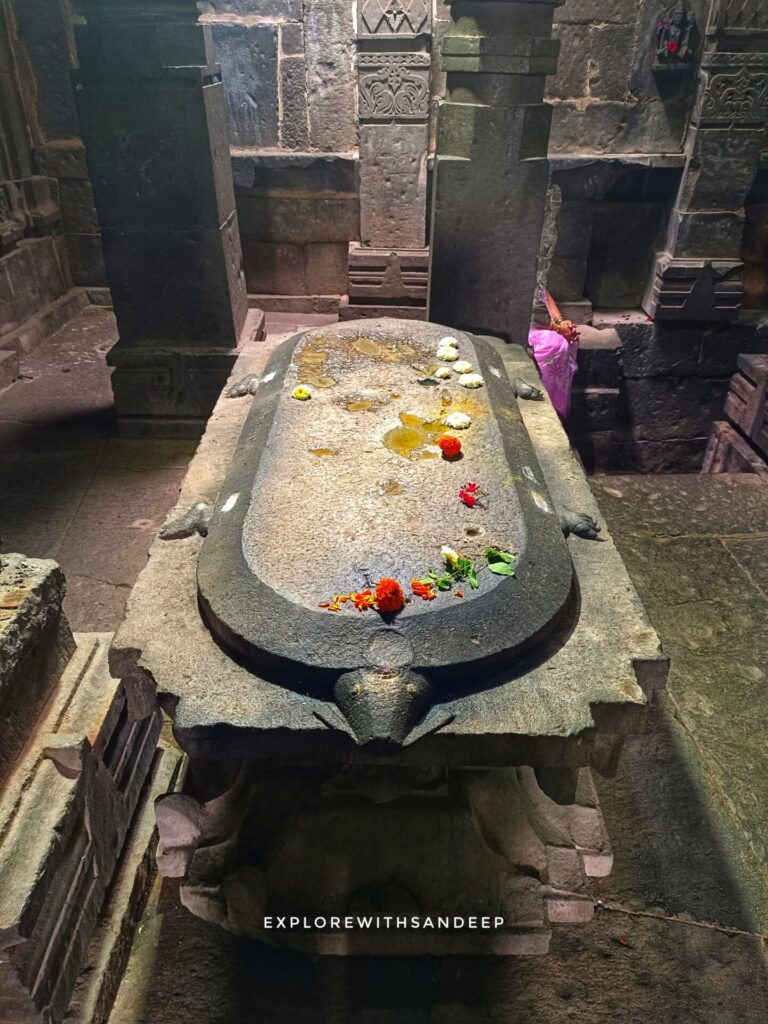
One carving that grabbed my attention was Lord Ganesha in Nataraj form — something I had never seen before! Then there was a 4-foot-long turtle idol, looking like it just walked out of some fantasy movie.

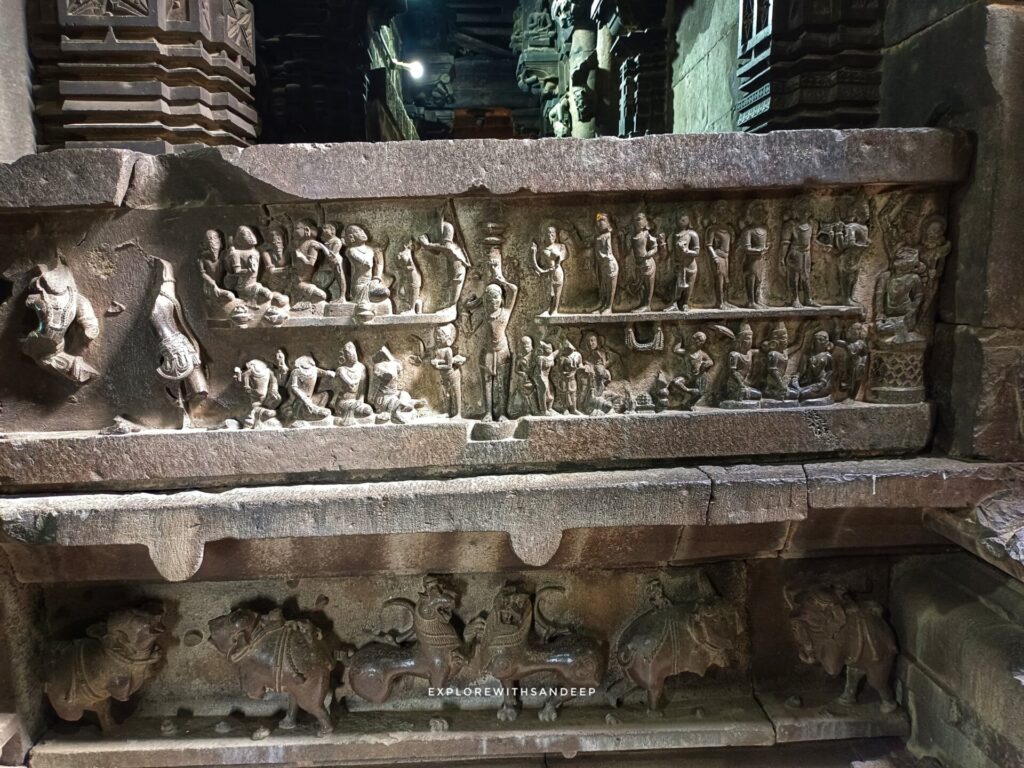
Nearby, we saw a Mahabharata panel, showing Bhishma lying on a bed of arrows, surrounded by Krishna and the Pandavas. Just next to it, the epic battle between Arjun and Karna, frozen in stone with such detail that you could almost hear the conch shells blowing. And guess what — we even spotted a carving of the Draupadi Swayamvar scene, where Arjun is aiming his bow at the rotating fish target above. It’s like watching the Mahabharata unfold one scene at a time. Our ancestors basically made a 3D comic book on stone — mind = blown! 🤯


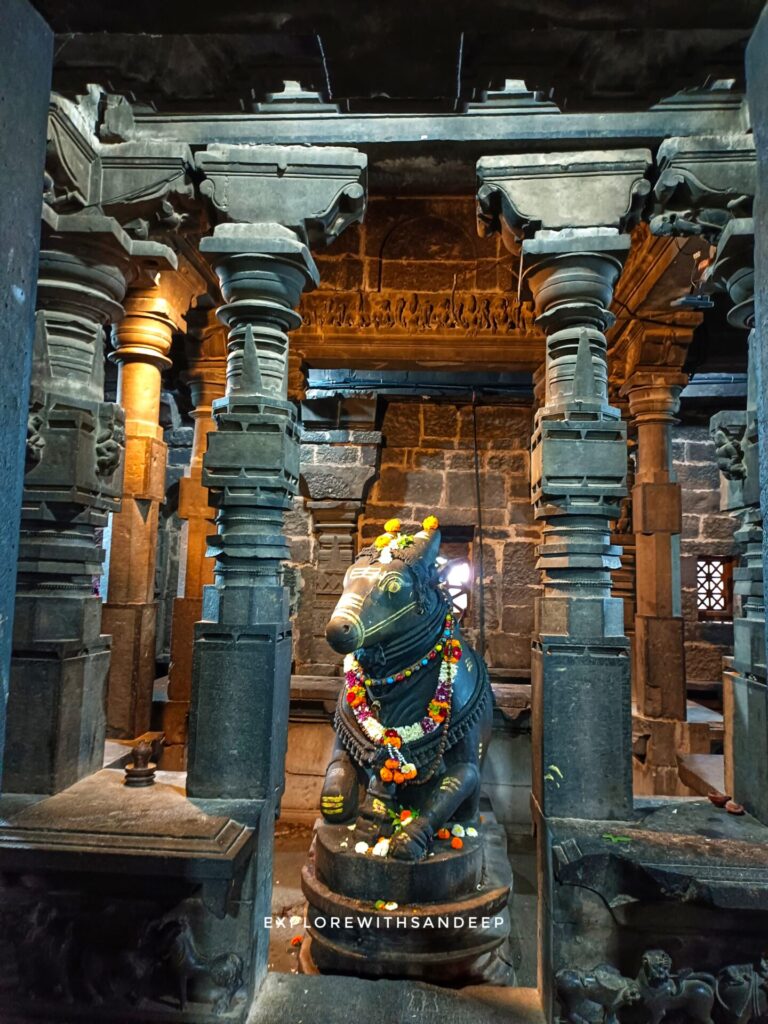
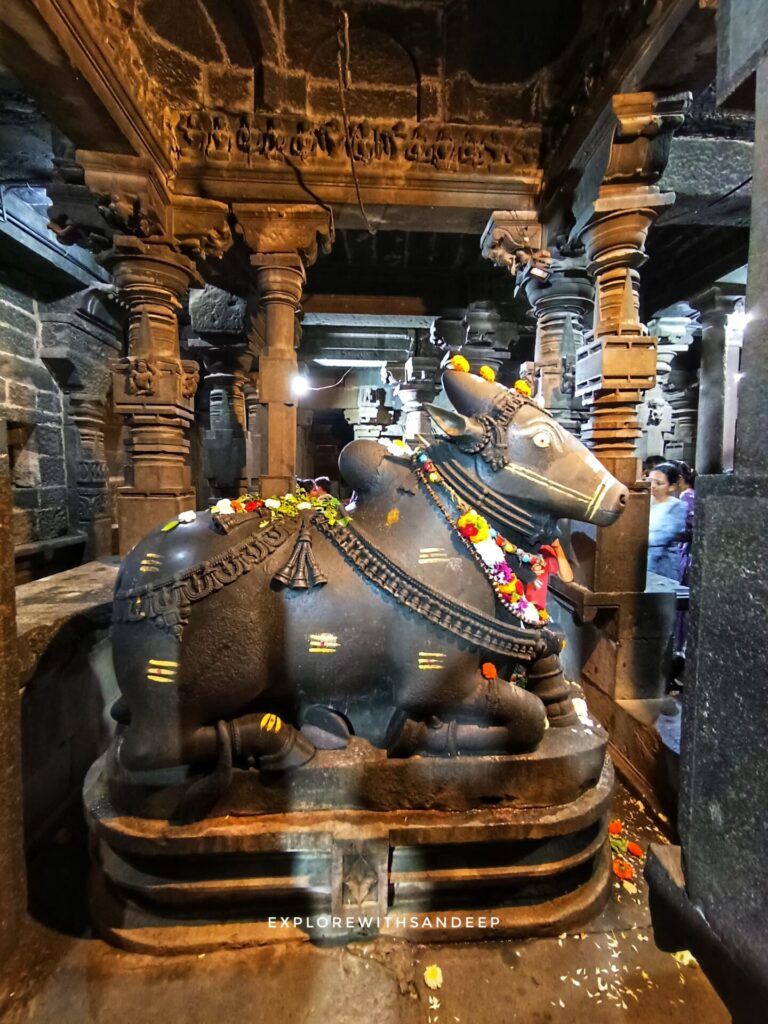

Then we saw the majestic 7-ft Nandi idol, carved out of black stone, with detailed ornament carvings on his back and neck. Above the Nandi Mandapam, there’s a beautifully carved Indra Darbar.
As we entered deeper into the temple, we saw a small room called Nedra Kosh, which is believed to be Bhuleshwar Mahadev’s sleeping area. Then came the Garbhagriha (sanctum sanctorum) — the holiest place. The gate itself was carved with hundreds of miniature statues, each telling a story. Above the door, there were five statues, damaged but still powerful enough to grab our attention.

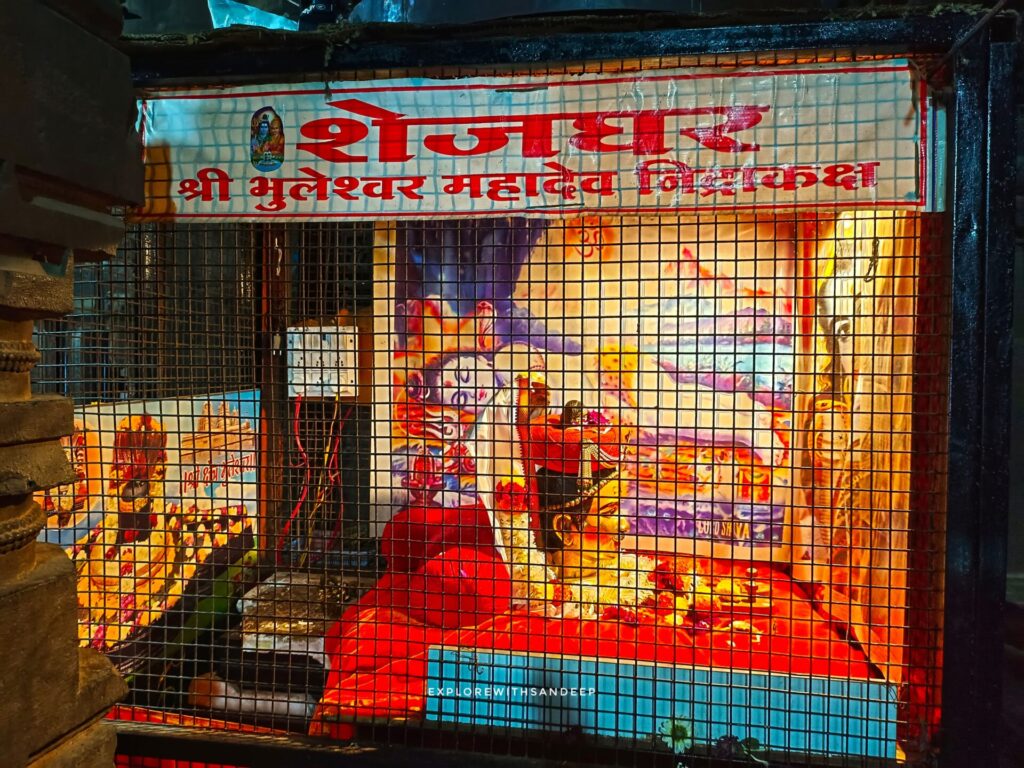
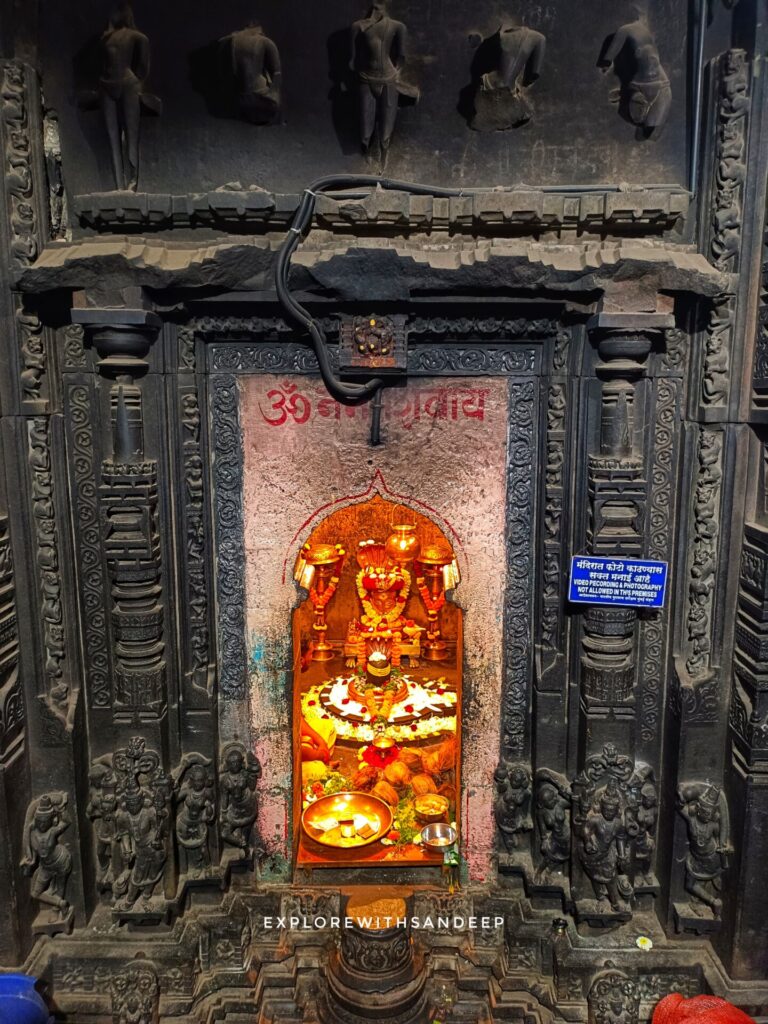
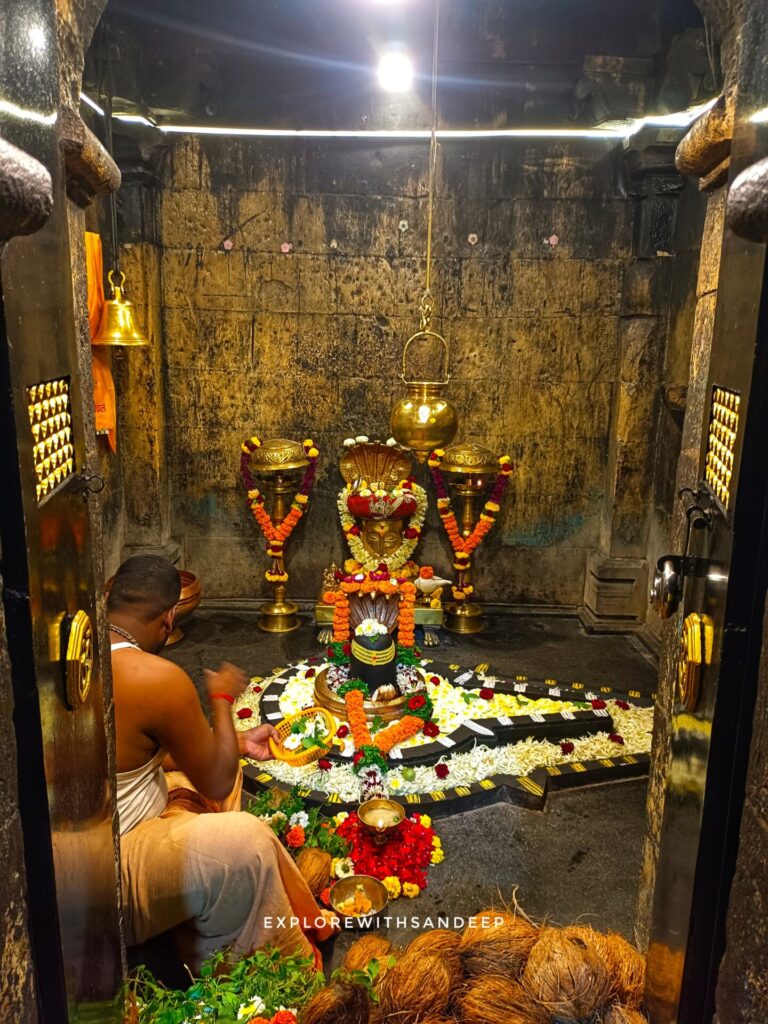
Inside, you’re not allowed to enter the innermost sanctum, but from outside, we saw the Shivling beautifully decorated with fresh flowers. A Vasuki snake carved in stone wraps around the Shivling, and behind it, there’s another Shivling with a metal face— the vibe was just divine. 🕉️💐
Bhuleshwar’s Carved Mysteries
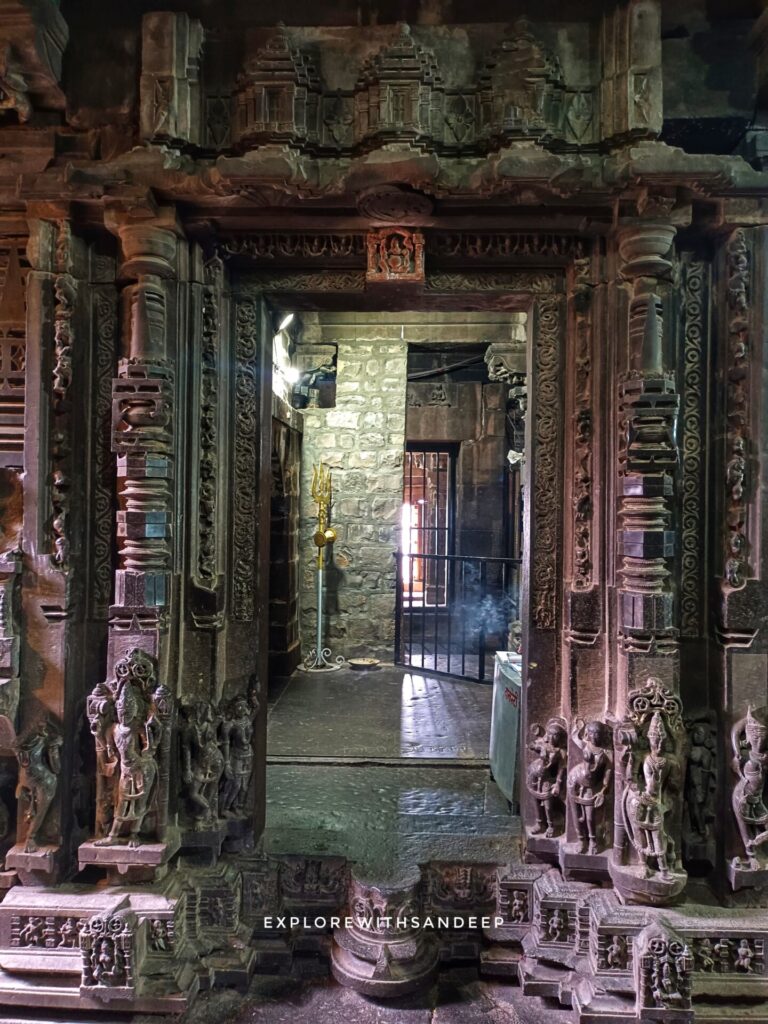


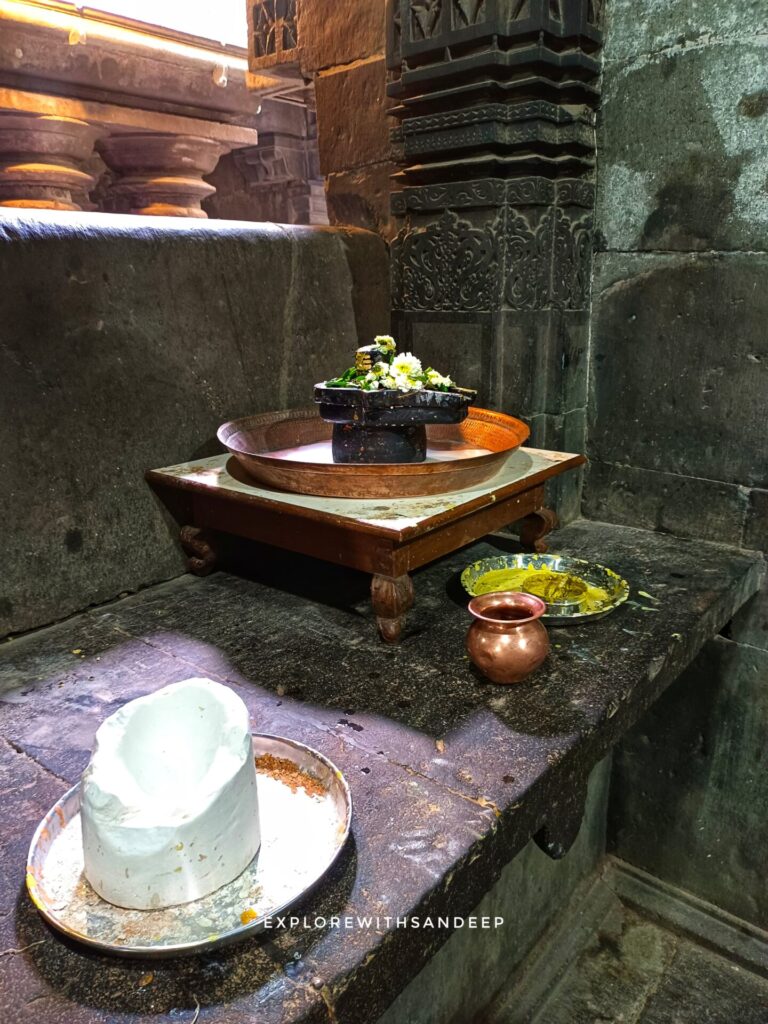


As we continued exploring the temple, every corner had something new to show. Then we came across carvings from the Ramayana, and it honestly felt like the walls were telling us stories. One carving showed Lord Ram aiming his arrow at the golden deer, and nearby, there was a beautiful scene where Ram and Laxman are talking to each other while leaving Ayodhya. Just standing in front of these carvings made us feel like we were part of those epic moments. The expressions, the clothes, the posture — all made from stone, but still so full of life😮.
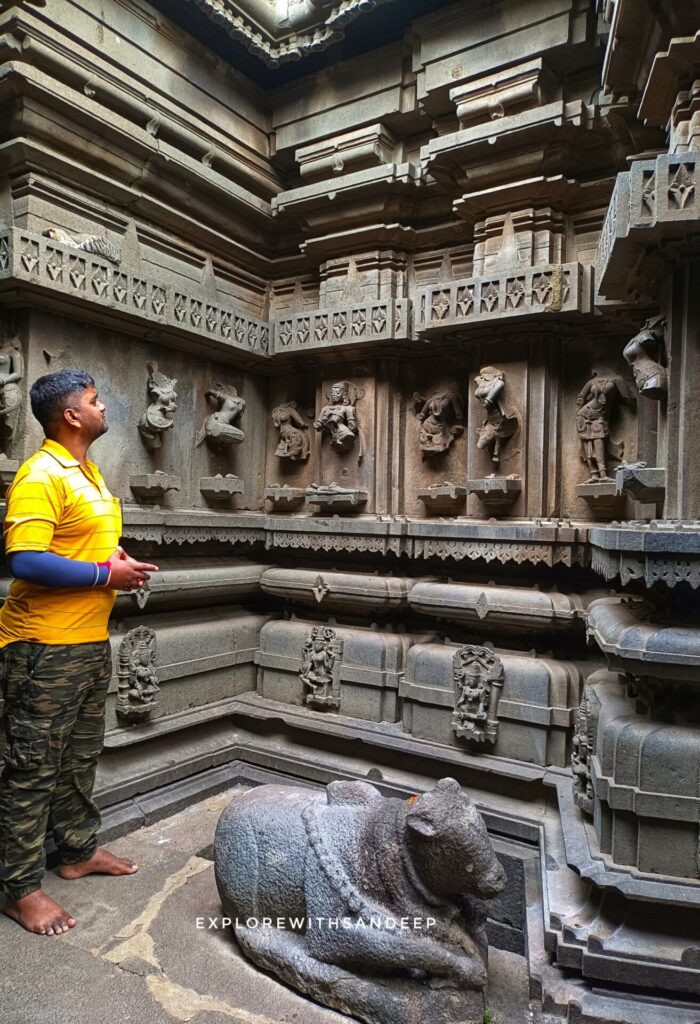
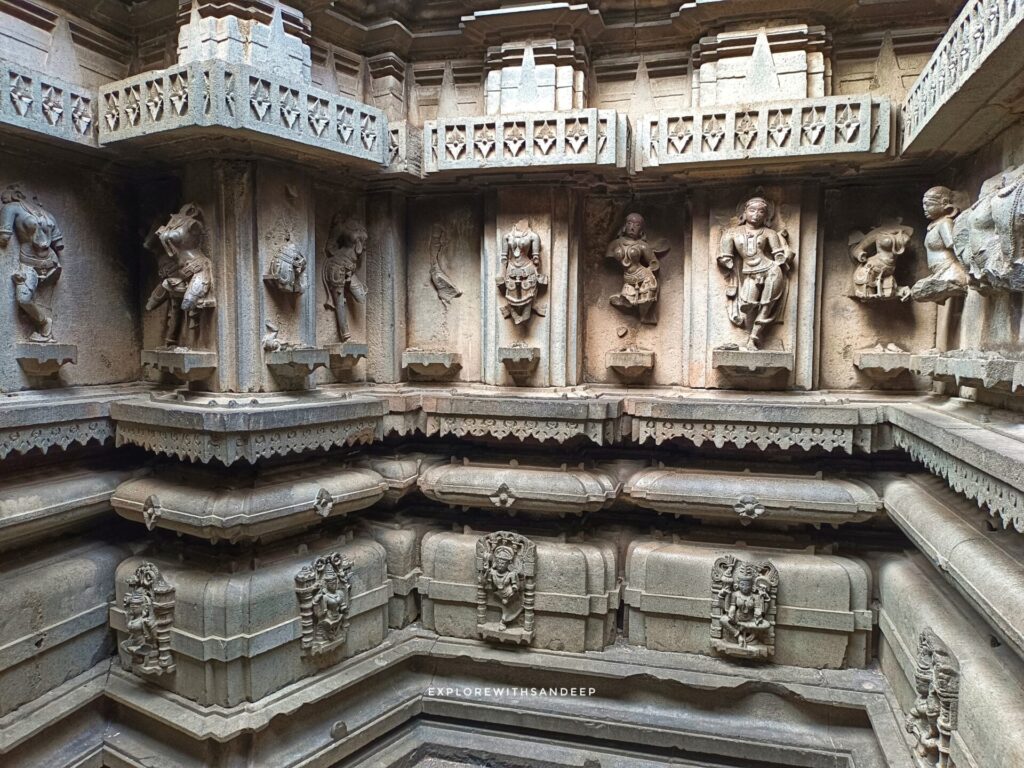
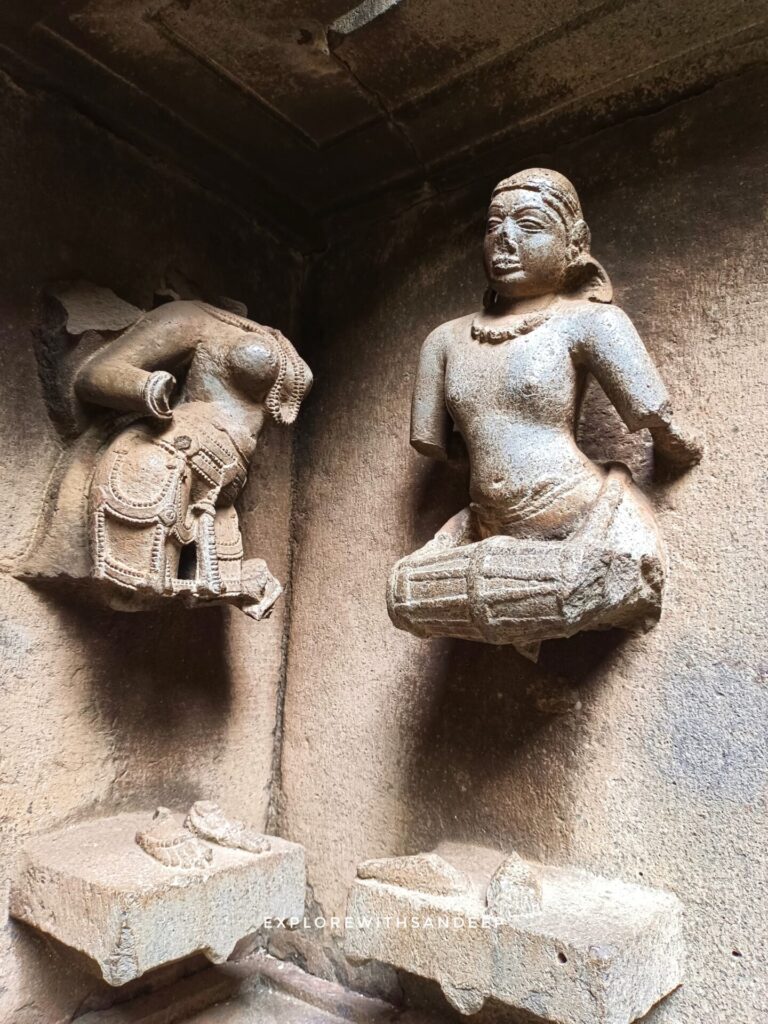
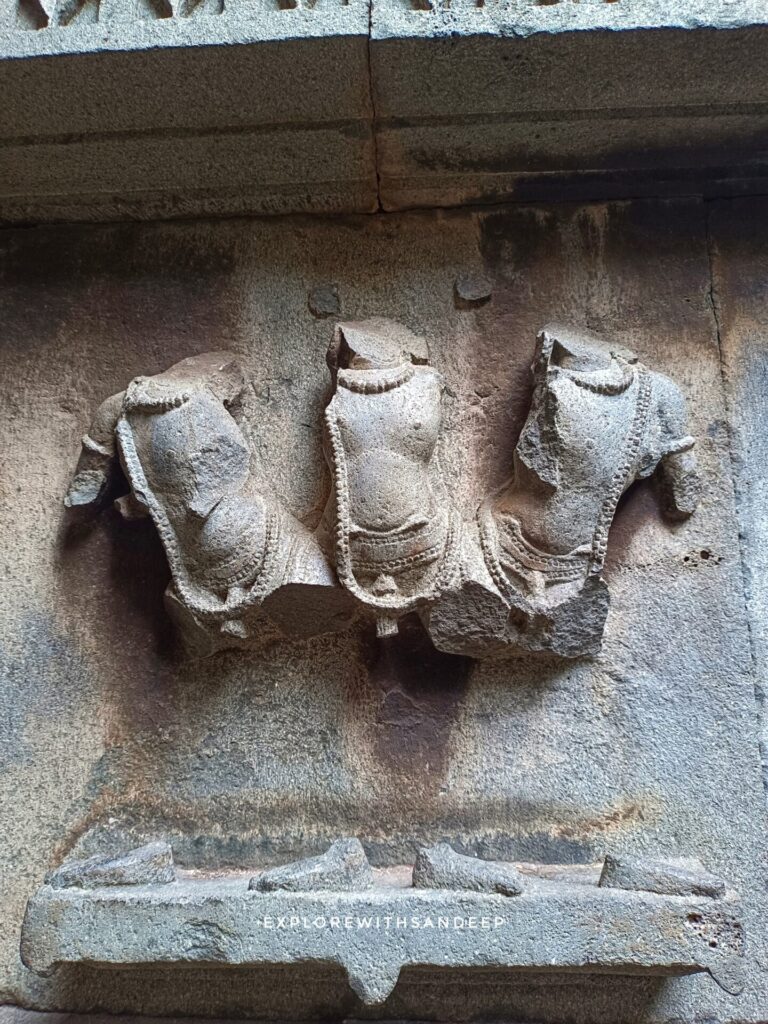

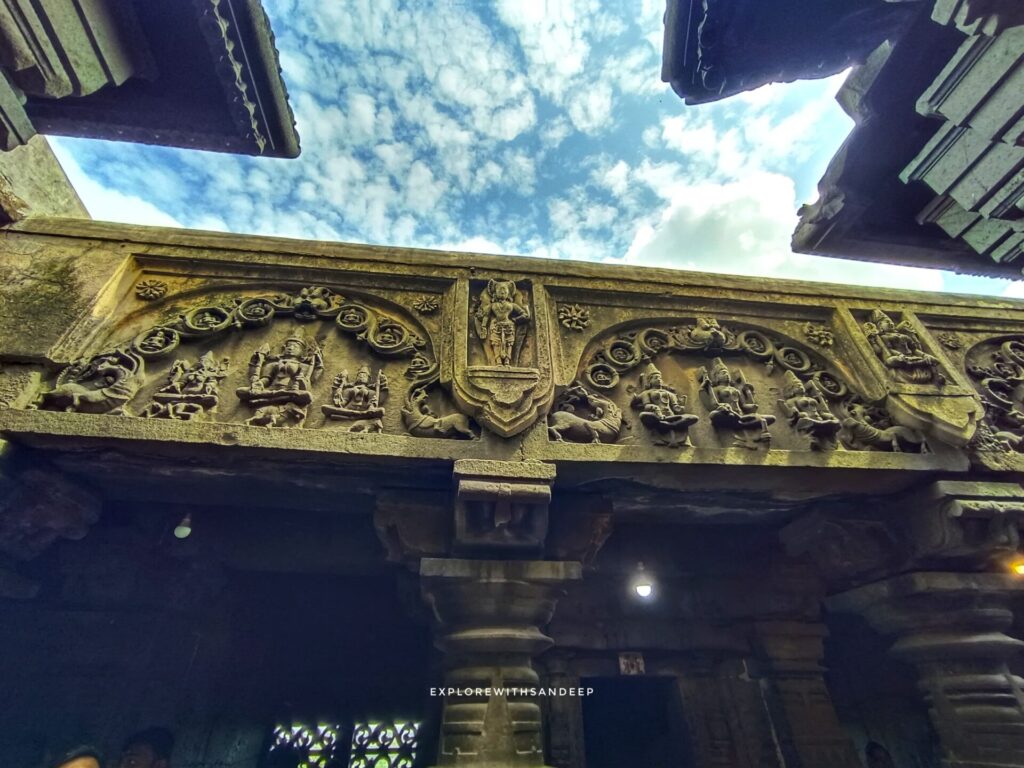
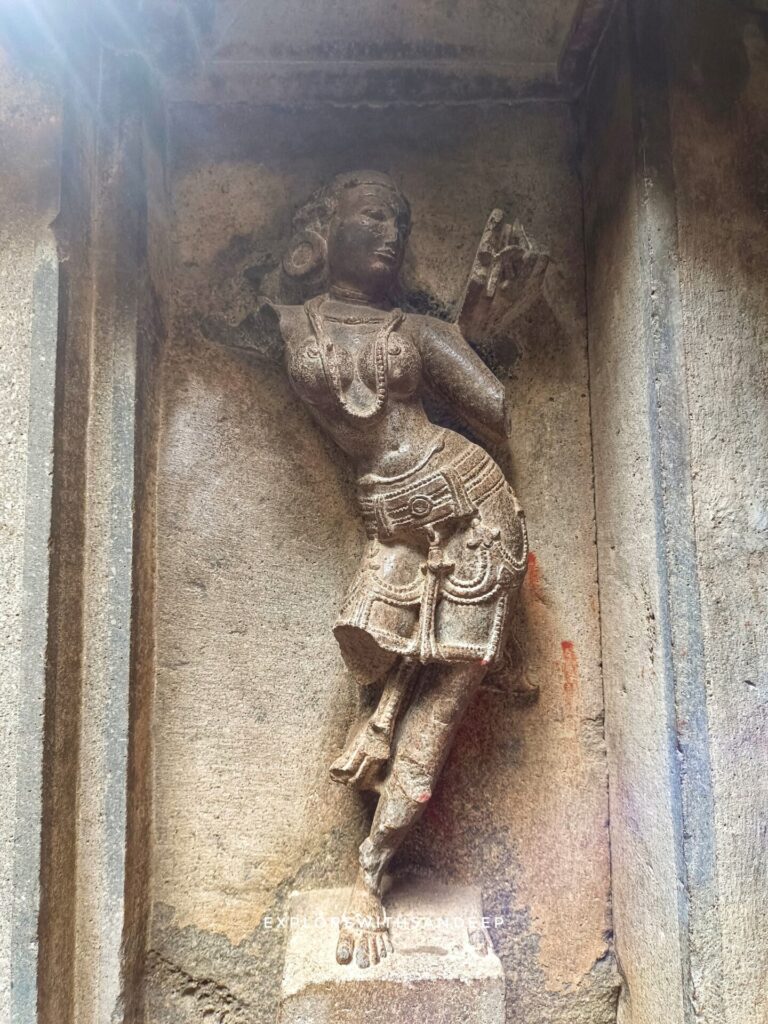

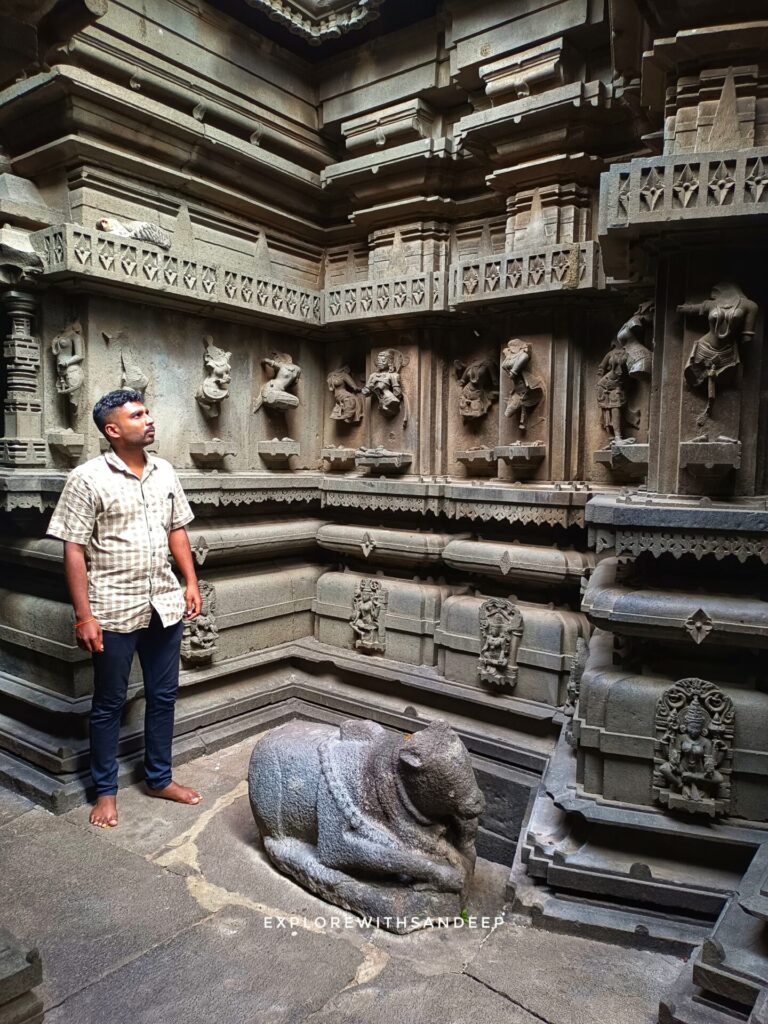
Then we moved closer to the inner sanctum, and that’s when things got really amazing. The walls were filled with carvings of apsaras, gandharvas, and bhargavas — dancing gracefully like they were performing a divine show for Mahadev himself. Some were playing drums, others were shown mid-dance, wearing beautiful jewellery, anklets, and traditional outfits. It truly looked like a grand classical dance event, frozen forever on the temple walls. The detailing was mind-blowing — you could even see the designs on their clothes and the bangles on their hands😍.
Even though many of these carvings were damaged by the Mughals, they still hold on to their charm. You can clearly feel the hard work, devotion, and skill of the artists who made them. It made us stop and stare for a while, just trying to take it all in.
Shiva, Ganesha & Kartikeya… as Goddesses? Yes
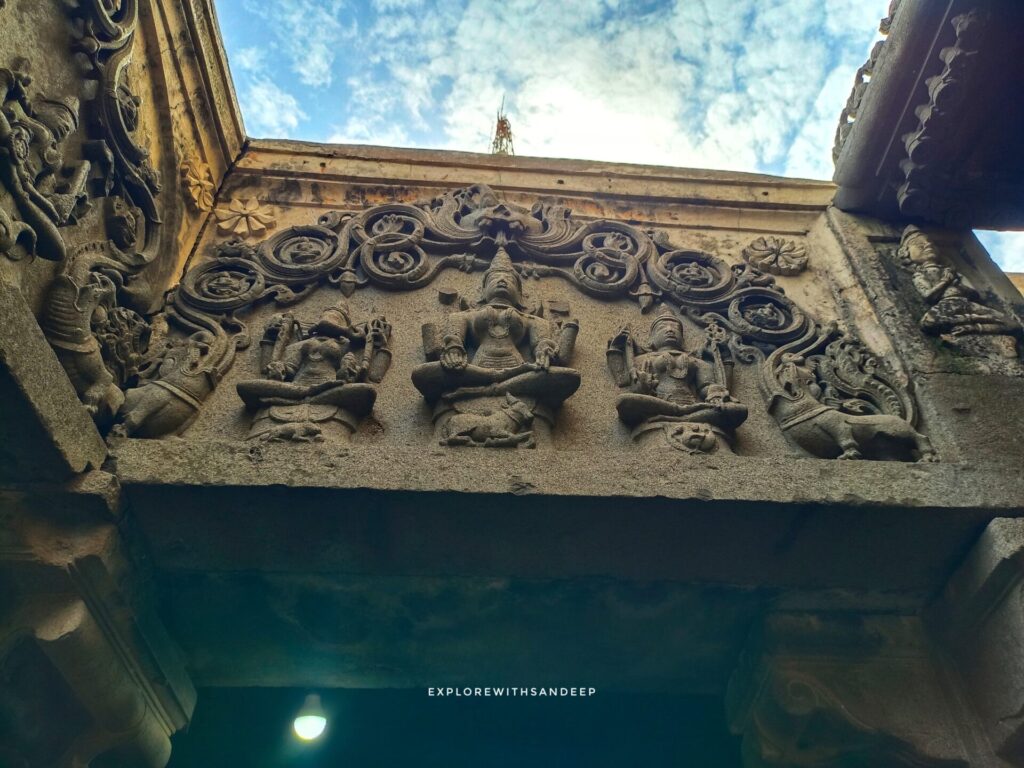
And then came the biggest surprise of the day! We saw Lord Ganesha, Mahadev, and Kartikeya in female form! Yes, you read that right — their names were Vinayaki, Maheshwari, and Koumari, and the carvings looked absolutely powerful and graceful at the same time. That was something we had never seen before, and honestly, it left us amazed. Who knew even the gods had such diverse forms? Massive respect to the creativity and spiritual depth of our ancestors🙌
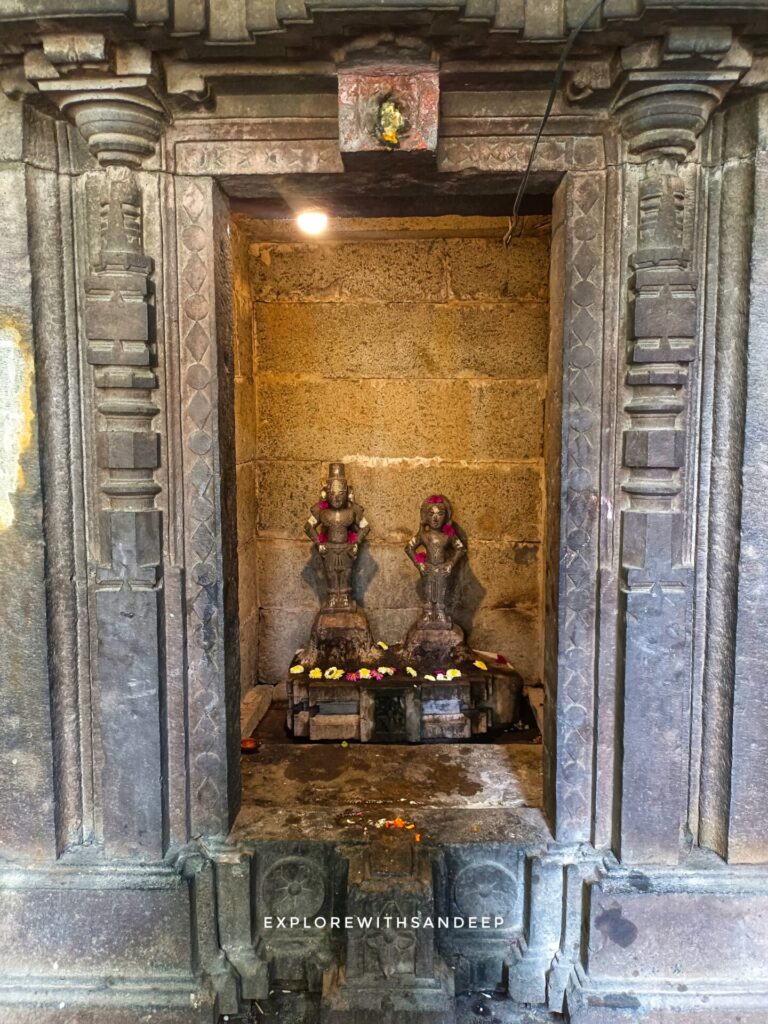
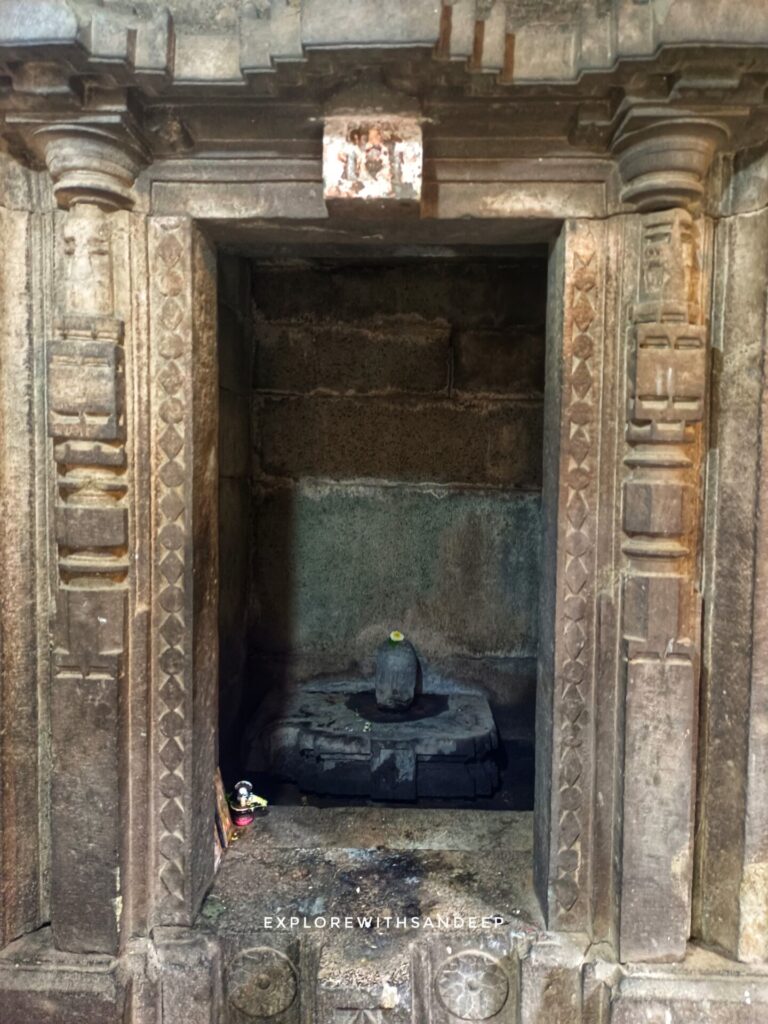
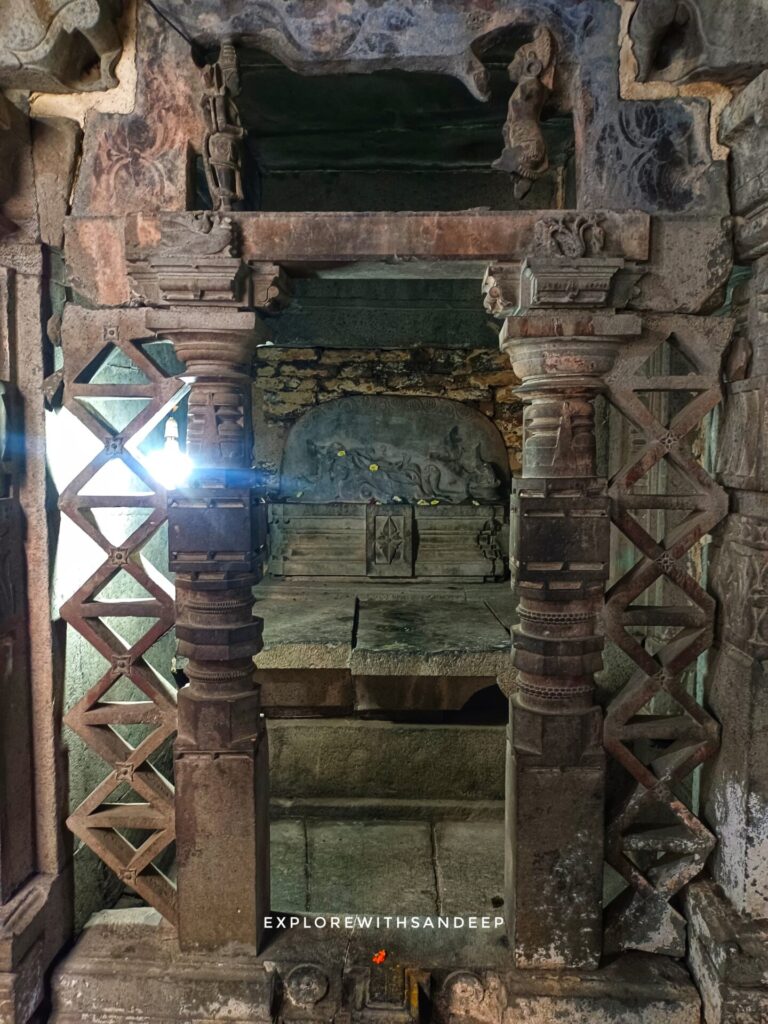

Just beside the main temple, there are about 4–5 small temples built close to each other. One of them is dedicated to Lord Vitthal and Goddess Rukmini — a quiet, peaceful spot that reminded us of Pandharpur. Another temple shows Lord Vishnu sleeping on the giant serpent Sheshanag, floating in the cosmic ocean. The way the snake is carved, curling protectively around Lord Vishnu, is something you don’t forget easily.
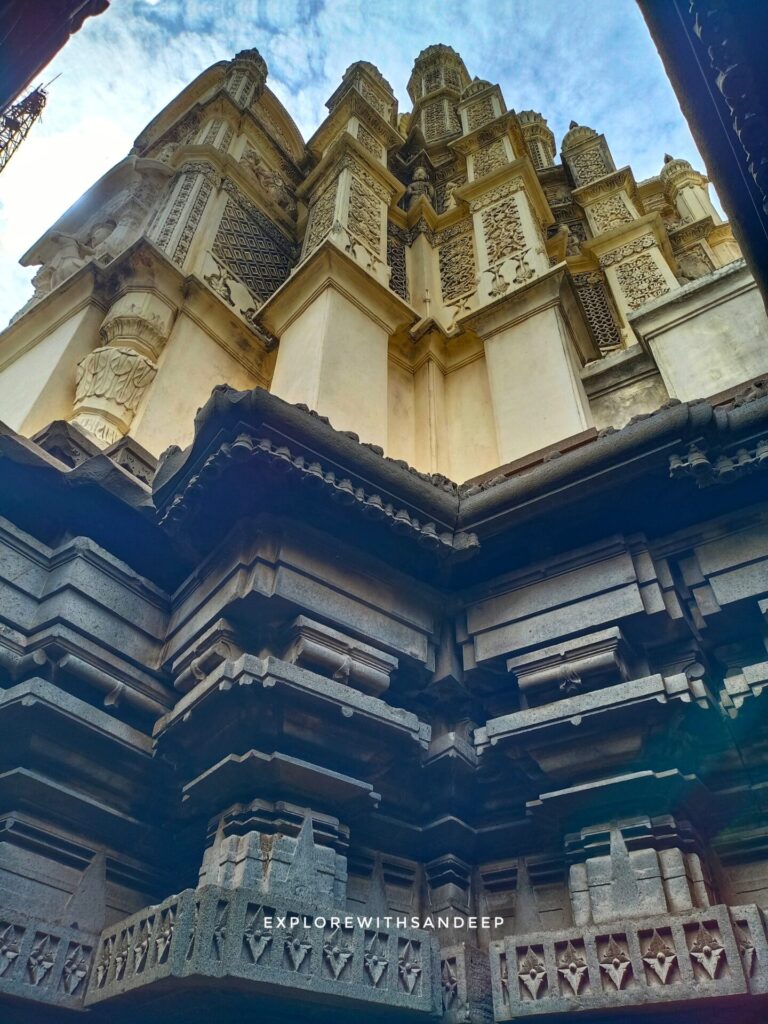
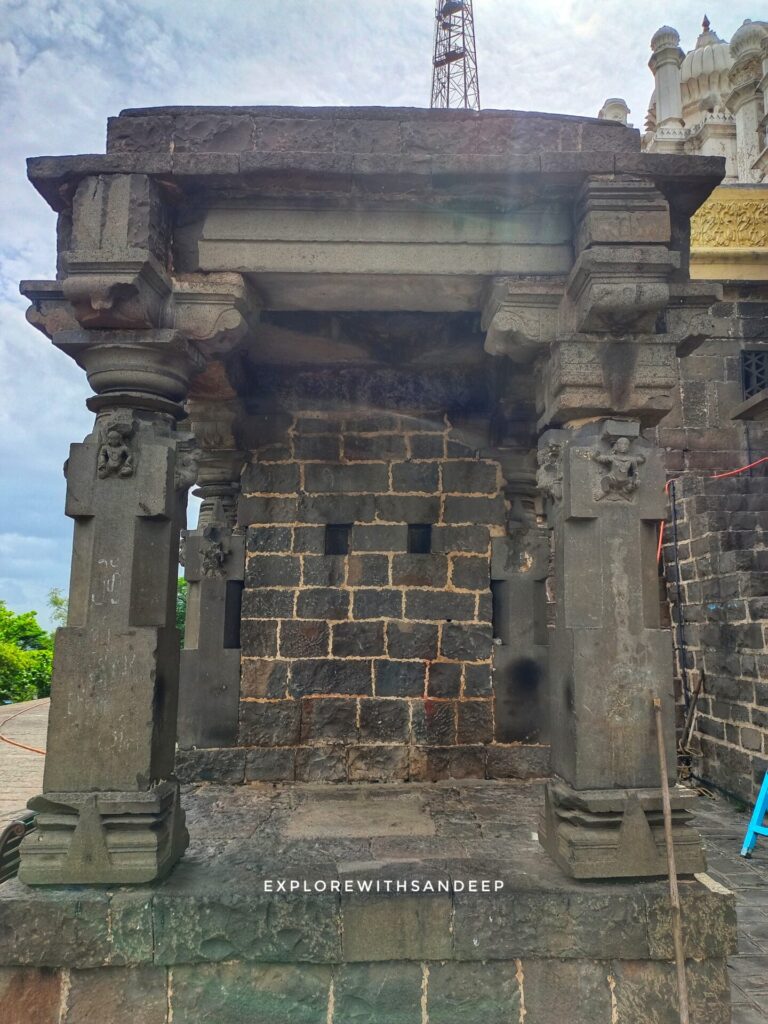
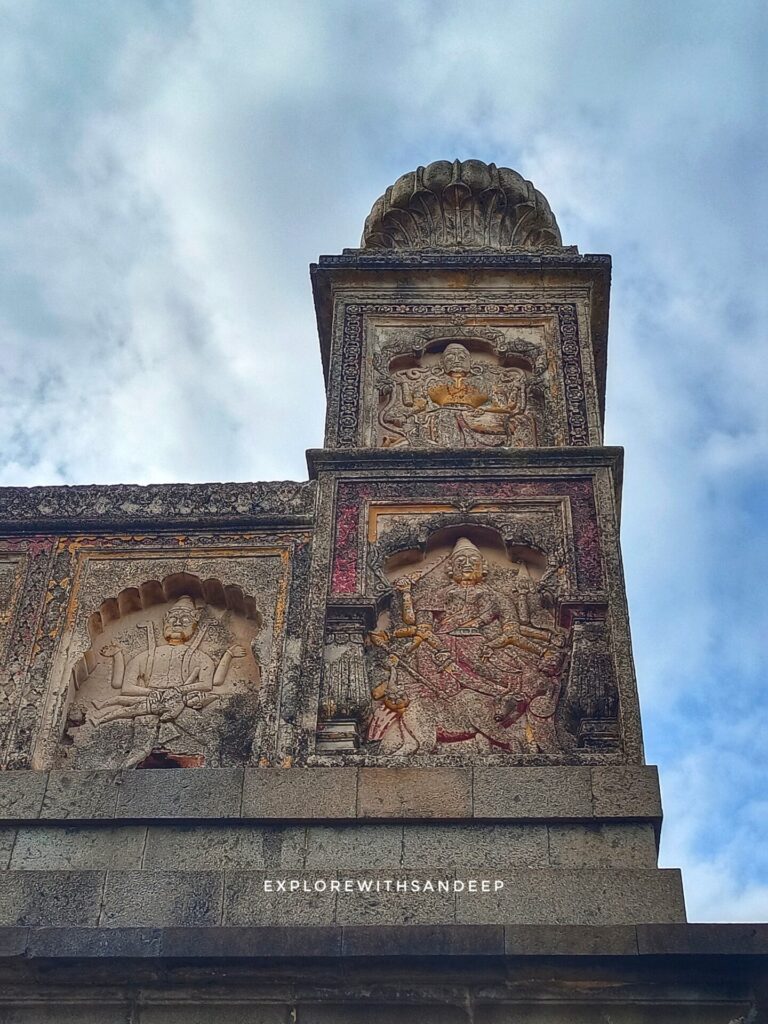
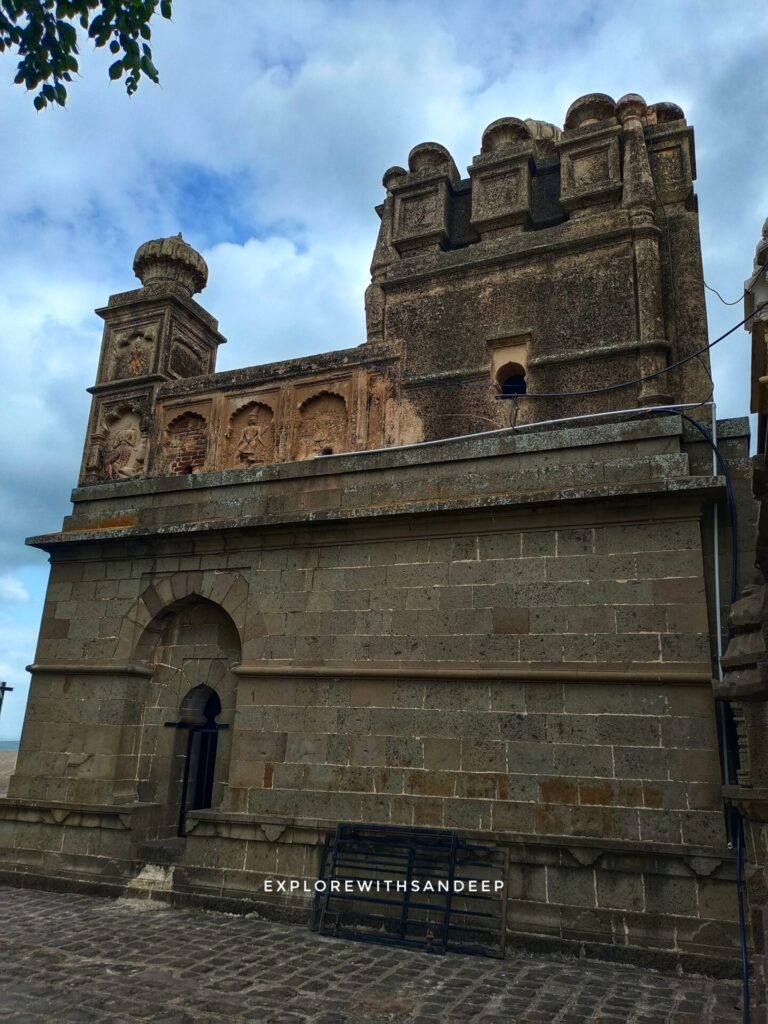
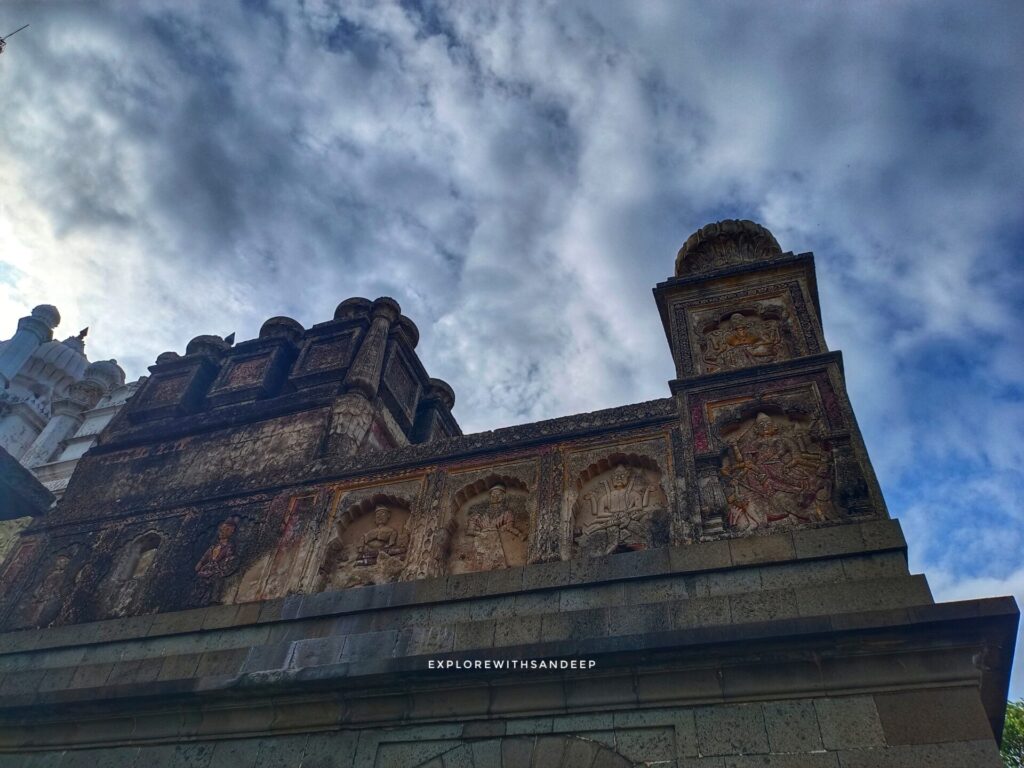
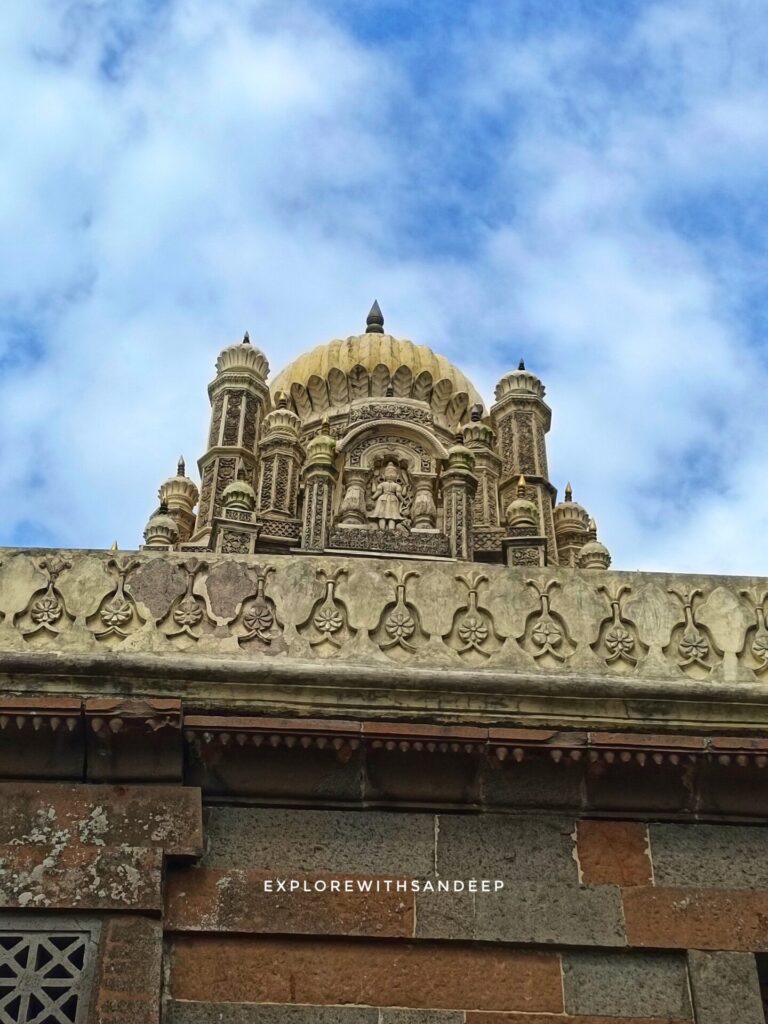
Even the outer walls and the top of the temple are carved with hundreds of idols — each one different, each one telling a tale. It truly felt like the temple was alive and breathing stories through stone, just waiting for someone to stop and listen.
Lunch, Ram Mandir & Return
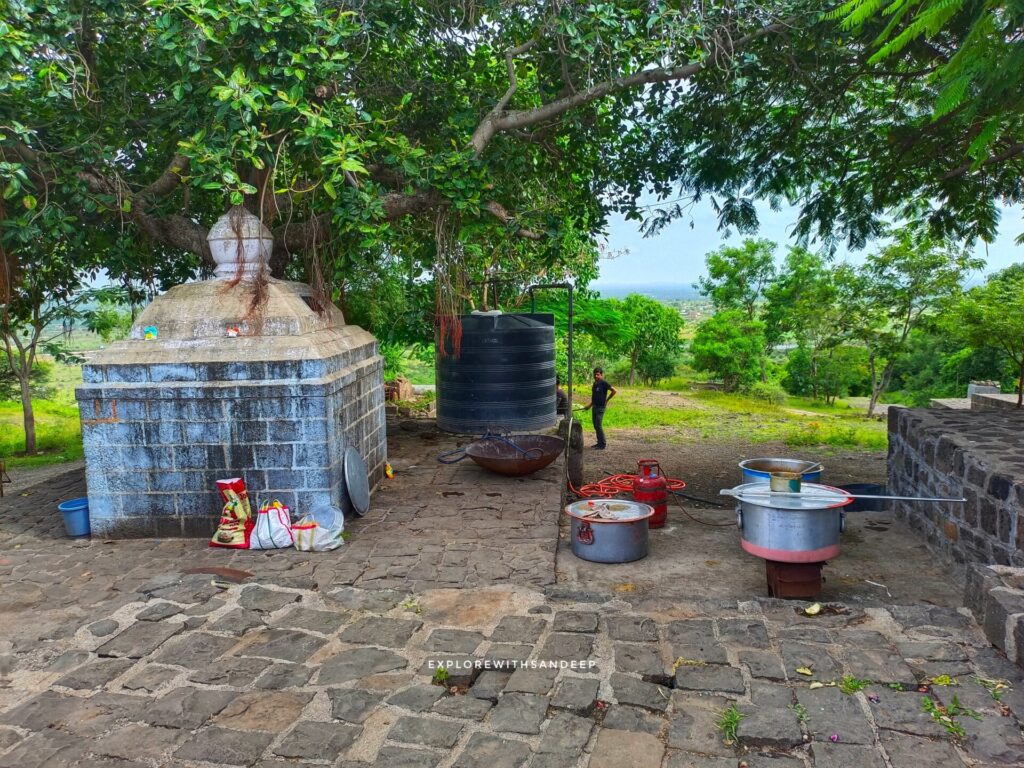
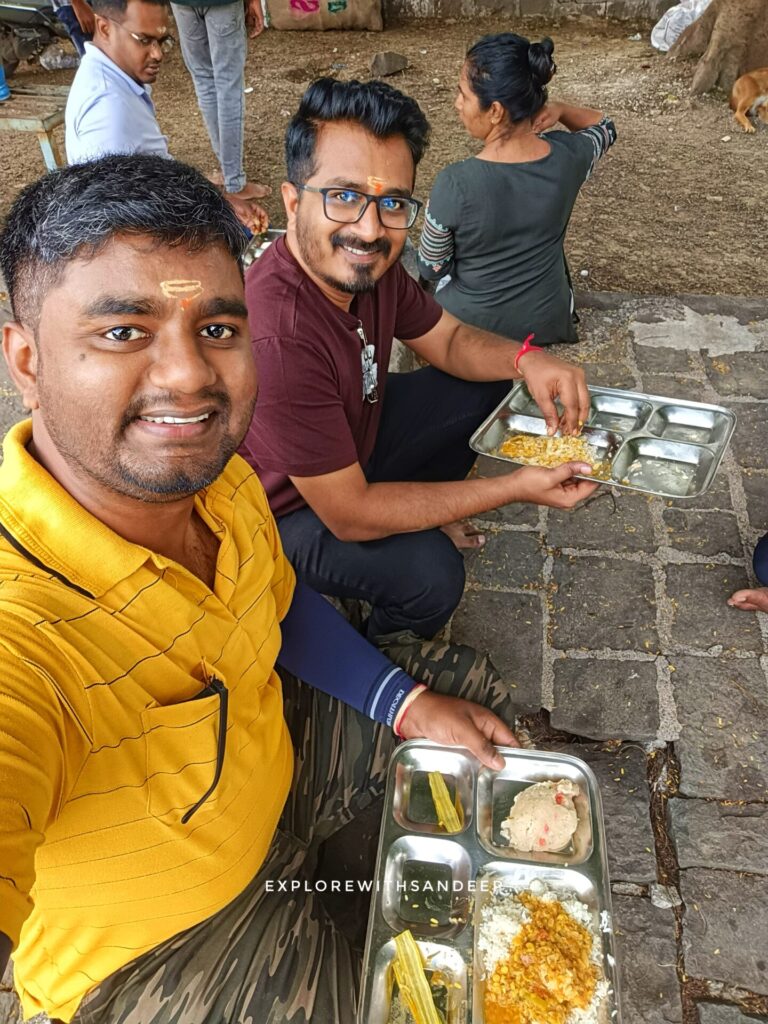
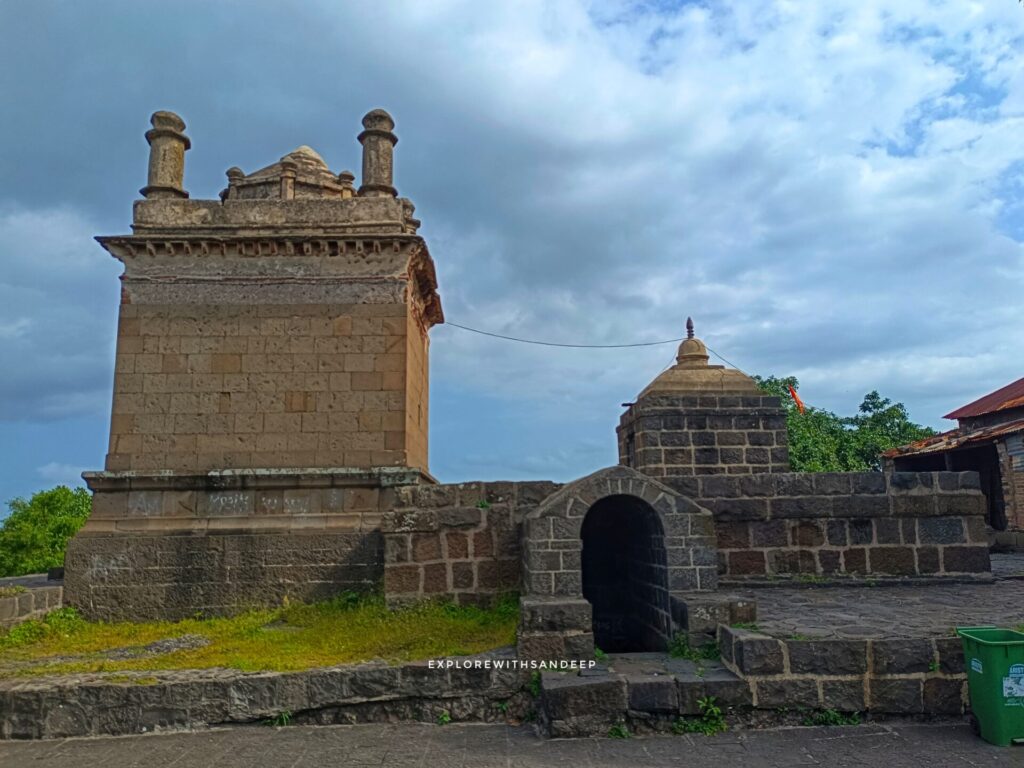
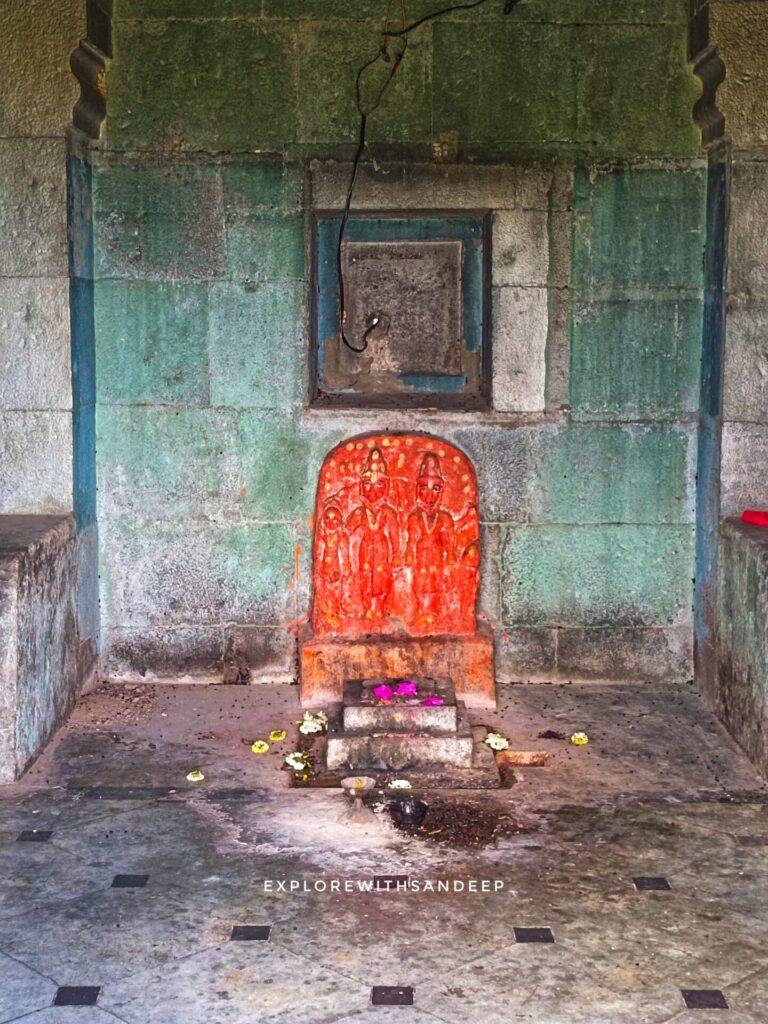
After exploring and going “OMG” a thousand times, we finally checked the time — 2 PM, and our stomachs were growling louder than the temple bells 😂. Just then, like a true blessing, we spotted a bhandara (free meal) happening nearby. No second thoughts — we grabbed our plates and dived in. Hot puris, sabzi, dal, and halwa — it honestly felt like Mahadev himself served us a divine thali 😋🙏. Nothing fancy, but every bite was full of love and devotion.
With happy tummies and even happier hearts, we took a peaceful stop at the nearby Ram Mandir, bowed our heads, and soaked in the calm vibes for a few moments.
And just like that, our unexpected spiritual adventure came to a beautiful end. As we kicked off the return ride back to Pune, we knew one thing for sure — Bhuleshwar Temple wasn’t just a visit, it was an experience. A soulful memory carved forever in our hearts. 🛕💫
Before You Scroll – Here's Why You Must Go!
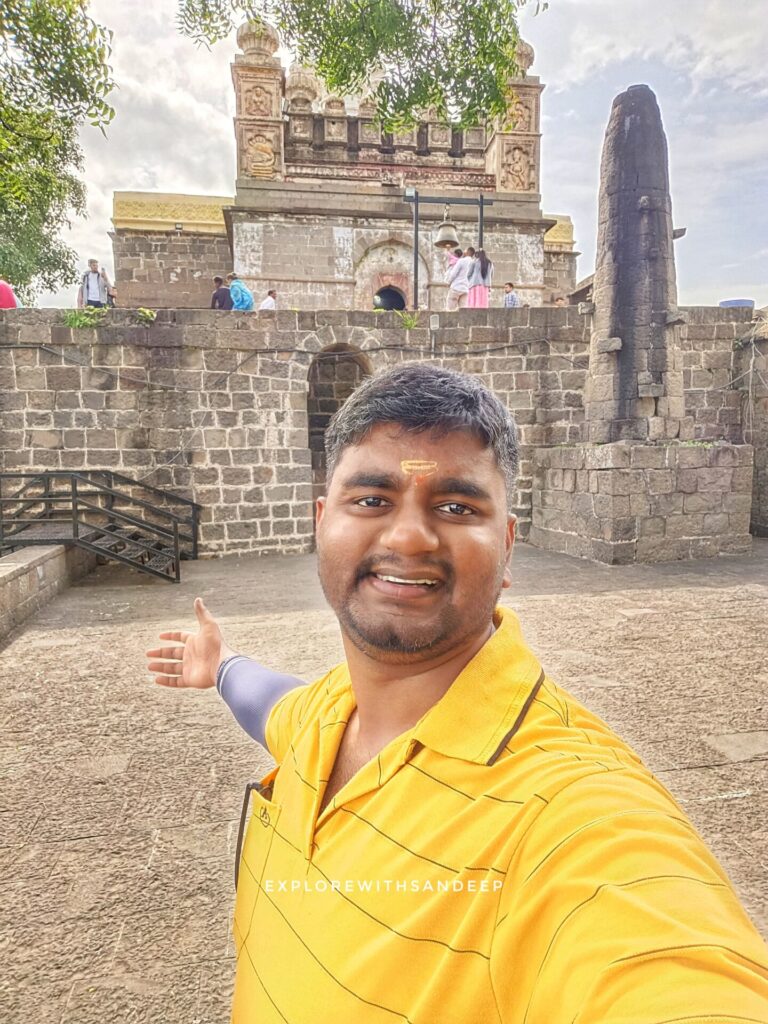
Bhuleshwar Temple isn’t just another spiritual place — it’s like stepping into a time machine, walking through a stone art gallery, and living inside a history book, all at once. Seriously, this place is magic carved in rock.
If you’re from Pune (or anywhere nearby) and still haven’t visited — bro/sis, what are you even waiting for? 😅 Whether you’re into temples, carvings, mythology, photography, or just want a peaceful escape from city life — Bhuleshwar has something for you.
So next time you’re planning a weekend getaway, skip the malls and crowded cafes. Pack your bags, call your gang, hit the road — and let Bhuleshwar surprise you.
Trust me, it’s not just a trip… it’s an experience you’ll carry with you for a long time. 🛕💫
If you loved this blog, drop a comment below!
Tell me what you think, share your experience, or suggest a new place you’d like me to visit or write about next. I’d love to hear from you! 🌍✍️💬
Until next adventure — Hi Zindagi Hai! 🌍✌️
Things to See at Bhuleshwar Temple
1. Shivling in the Garbhagriha
The main sanctum houses the beautifully decorated Shivling, wrapped with a Vasuki snake and surrounded by divine carvings. The energy here is just pure peace.2. 7-Foot Nandi Idol
This majestic black stone idol of Nandi sits outside the sanctum, with detailed carvings on its body and ornaments — a true piece of ancient art.3. Stunning Stone Carvings
Every wall, pillar, and ceiling is covered with intricate carvings of gods, goddesses, apsaras, saints, animals, and scenes from Hindu epics. It’s like a stone storybook.4. Mahabharata Panel
You’ll spot Bhishma lying on a bed of arrows, Krishna with the Pandavas, and even the battle between Arjun and Karna — all carved with amazing detail.5. Ramayana Scenes
From Lord Ram aiming at the golden deer to Ram and Laxman leaving Ayodhya — the temple walls literally narrate scenes from Ramayana in stone.6. Rare Female Forms of Deities
See Ganesha as Vinayaki, Shiva as Maheshwari, and Kartikeya as Koumari — powerful and graceful female forms that most people have never even heard of.7. Apsaras & Gandharvas in Dance Poses
The walls are filled with carvings of celestial dancers performing for Mahadev — you can even see their jewellery and musical instruments. Pure art!8. Nedra Kosh (Sleeping Room of Mahadev)
A small chamber inside the temple believed to be where Lord Shiva rests — a peaceful and sacred corner often missed by casual visitors.9. Ancient Temple Bell & Entry Gates
A giant bell and two majestic gates welcome you inside. Don’t forget to ring the bell — tradition says it brings good luck!
10. Mini Temples Around
You’ll also find small temples nearby, including one for Lord Vitthal-Rukmini and another of Lord Vishnu resting on Sheshanag — each with calm vibes and lovely carvings.
How to Reach Bhuleshwar Temple
Bhuleshwar Temple is about 50 km from Pune and can be reached via two main routes. The scenic route goes through Bopdev Ghat → Saswad → Vanpuri → Malshiras village, offering lush greenery and hill views — perfect during monsoon. It takes around 1.5 to 2 hours by bike or car.
The faster highway route is via Hadapsar → NH 65 (Pune–Solapur Highway) → Yevat → Malshiras village. This path has smooth roads and is ideal for a relaxed drive. From Malshiras, a single uphill road leads to the temple. Carry water, fuel up, and enjoy the divine journey!
📍Nearby Places to Explore Around Bhuleshwar Temple
Dhawalgad Fort (15 km)
Seen on the way to Bhuleshwar, this small hill fort is great for a short hike and offers beautiful views of the surrounding landscape. A quick stop for history buffs and trekkers.Jejuri – Khandoba Temple (30 km)
One of Maharashtra’s most famous pilgrimage sites. The golden turmeric-smeared stairs and strong spiritual vibes make it a unique experience. 🛕Chintamani Ganpati, Theur (45 km)
One of the eight revered Ashtavinayak temples, this spot offers peaceful vibes and riverside views. A calm and spiritual break from the city.Ramdara Temple (40 km)
A serene temple near Loni Kalbhor, surrounded by a small lake and greenery. Ideal for a quiet moment, photography, and relaxation. 🌿📸Morgaon Ganapati Temple (40 km)
The main temple in the Ashtavinayak circuit, this is a must-visit for Ganesha devotees and spiritual seekers.Saswad Town (22 km)
A charming town with old temples, forts, and scenic landscapes. Also known for its connections to Maratha history.Narayanpur – Balaji & Dattatreya Temples (45 km)
A peaceful temple stop with a replica of Tirupati Balaji and a famous Lord Datta Mandir. Calm, clean, and spiritually rich.Purandar Fort (47 km)
A historic fort associated with Chhatrapati Shivaji Maharaj. Ideal for a weekend trek and a taste of Maratha legacy.Baneshwar Temple & Forest (50 km)
A beautiful Shiva temple surrounded by forest and nature trails. Visit during monsoon to enjoy waterfalls and fresh greenery.- Dive Ghat View Point (35 km)
A popular viewpoint on the way back to Pune. Great for sunsets, valley views, and quick chai breaks. 🌄☕
🙋♂️ FAQ – Bhuleshwar Temple Travel Guide
1. Where is Bhuleshwar Temple located?
Bhuleshwar Temple is located about 50 km from Pune, near Yevat in Maharashtra. It’s situated on top of Daulatmangal Fort (also known as Mangalgad Fort).
2. How old is the temple?
The original temple was built in the 8th century by the Rashtrakuta dynasty and was later rebuilt in the 13th century by the Yadava kings.
3. Why does it look like a mosque from far away?
To protect the temple from Mughal destruction, it was cleverly designed to resemble a mosque from a distance, with plain outer walls and fort-like architecture.
4. What’s the best time to visit?
Visit during the monsoon (June to September) for lush greenery, or during the holy Shravan month (July–August) for a spiritual vibe and bhandara food offerings.
5. Is there any entry fee?
No entry fee. The temple is open to all, and visitors can explore it freely.
6. How much time does it take to explore the temple?
You’ll need about 1.5 to 2.5 hours to explore the carvings, inner sanctum, nearby shrines, and enjoy the peaceful surroundings.
7. Is it suitable for kids and elderly people?
Yes, but there are a few stairs. Go slow, wear comfy footwear, and stay hydrated.
8. Is food or water available nearby?
There are no shops at the top, but near the parking area, locals sometimes sell fruits and vegetables. It’s best to carry your own water and snacks.
9. Is parking available?
Yes, a small parking area is available near the base of the temple for both two-wheelers and cars.
10. Are guides available at the temple?
There are no official guides, but some locals or priests may share stories if asked politely.

